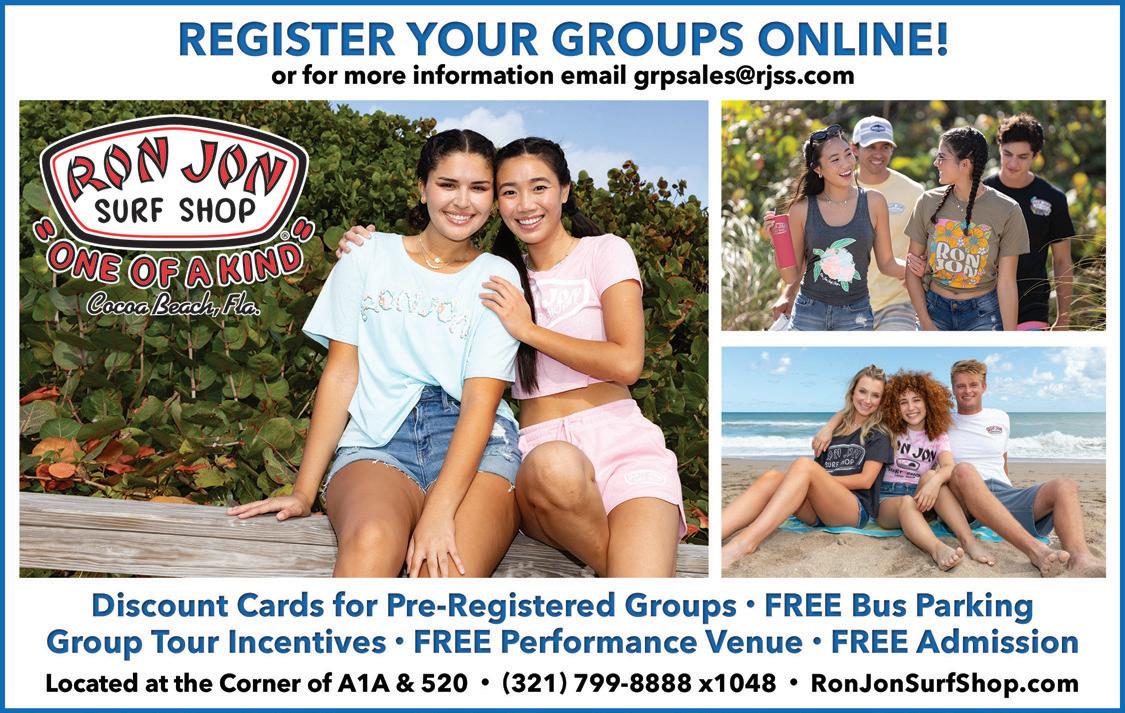PERFECT PARK PROGRAMS
An abundance of support from state and national parks means stress-free trip planning


PERFECT PARK PROGRAMS
An abundance of support from state and national parks means stress-free trip planning

Fostering responsibility and engagement during field trips enhances real-world skills
Student trip planning is made easy with detailed expert advice

Editorial & Advertising Office
621 Plainfield Road, Suite 406 Willowbrook, IL 60527
P 630.794.0696 F 630.794.0652 info@ptmgroups.com www.ptmgroups.com
Publisher – Jeffrey Gayduk jeff@ptmgroups.com
Chief Editor – Jason Paha jason@ptmgroups.com
Managing Editor – Heather Dale heather@ptmgroups.com
Contributing Writers – Billy Stampfl, Sue Arko, Ashley Dale Director, Design & Production – Lisa Hede lisa@ptmgroups.com
Graphic Designer – Romeo Alcantara
Production Coordinator – Kelsey Ledford kelsey@ptmgroups.com
Marketing and Communications Specialist – Courtney Lind courtney@ptmgroups.com
Advertising Information – Advertising@ptmgroups.com
The publisher accepts unsolicited editorial matter, as well as advertising, but assumes no responsibility for statements made by advertisers or contributors. Every effort is made to ensure the accuracy of the information is published, but the publisher makes no warranty that listings are free of error. The publisher is not responsible for the return of unsolicited photos, slides or manuscripts.
Student Travel Planning Guide (ISSN 2154-4905) is published annually by Premier Travel Media Inc. 621 Plainfield Road, Suite 406, Willowbrook, IL 60527. Postage paid at Willowbrook, IL and Lebanon Junction, KY. This publication is distributed free to youth group travel organizers and travel suppliers catering to the market. Single copies for all others is $9.95.
Send Address Change To: Premier Travel Media, Inc. 621 Plainfield Road, Suite 406 Willowbrook, IL 60527

Copyright 2024. All rights reserved. Materials may not be reproduced in any form without written permission of the publisher.

Curiosity acts as the compass guiding students towards uncharted territories of knowledge and self-discovery.
As the architects of these transformative experiences, you wield the power to mold young minds and kindle their passion. What better way than with thoughtfully planned student travel experiences?
Here’s a peek into our all-new digital Student Travel Planning Guide, your goldmine of student travel inspiration:

• Educational Trips on a Budget: Planning Affordable Student Travel Experiences outlines vital steps to ensure your dollar stretches the farthest.
• 6 School Fundraising Ideas to Make Your Field Trip A Reality offer unique twists on traditional ideas.
• How to Plan an Educational Field Trip for Students is your roadmap for crafting the most impactful class trips.
• State and National Park Programs Perfect for Students provide expert outdoor learning experiences.
• Fostering Responsibility and Engagement in Student Travel is a key component of educational travel, and we provide realistic techniques.
• Eco-Friendly Practices During Student Travel That Foster Environmental Stewardship are also outlined so you can feel good about traveling.
Enjoy our content? Share with fellow student trip planners and educators on social media and other platforms and join our bi-weekly newsletter for a regular dose of student travel insights. ORDER YOUR COPY TODAY! LeisureGroupTravel.com/ TravelingTribes #BringYourTribe
Part inspiration, part tactical business planning, Traveling Tribes helps readers discover the world of group travel and guides them along the journey of leading their own tribe of travelers on expeditions around town or around the globe.
• We provide insights on College Campus Tours: Key Ingredients to Planning the Perfect College Visit Itinerary with essential tips.
Forge ahead fearlessly and stay inspired! Heather Dale, Managing Editor
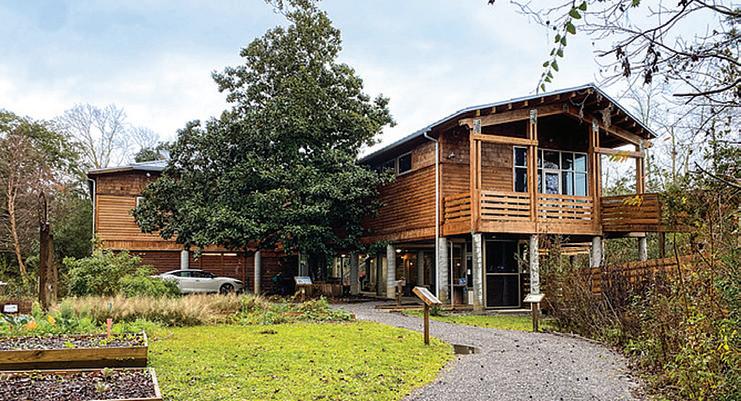


JASSBY PROVIDES SOLUTIONS FOR THE STUDENT TRAVEL MONEY GAME
As long as student travel has been in existence, cash has been king. If you’ve been in the business for any length of time, you’ve heard the horror stories of student trip planners walking down the street with suitcases full of cash or having to separate bills into piles with paper clips holding each allotment together. Then there were the tales of last-minute changes or additions that required more cash or kids losing that precious $20 bill they had for lunch. Cash definitely didn’t make student travel easy, but options

JASSBY, INC.
Greg Bottenhorn
843-360-5611
greg.bottenhorn@jassby.com www.jassby.com/student-travel Great for performance travel as most venues today are cashless. All photos courtesy of


Helping kids learn valuable lessons about money — and how to manage it — is at the core of Jassby’s DNA.
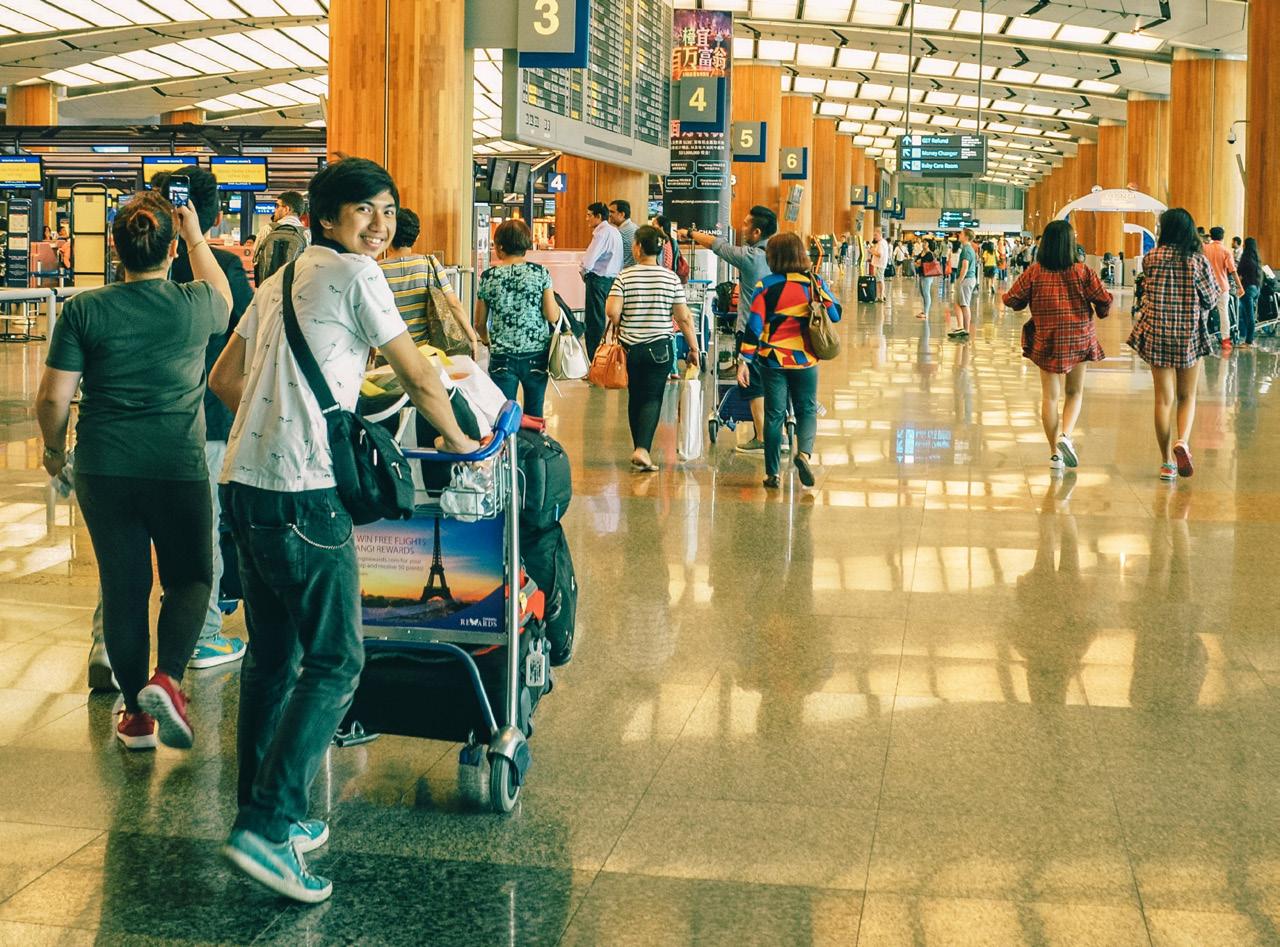

were limited. It was hard to issue credit cards to kids and vouchers created other issues.
But there weren’t any better available options… until now.
Since 2017, Jassby has been working in financial literacy. Helping kids learn valuable lessons about money — and how to manage it — is at the core of their DNA. The Jassby Debit Card, whether a digital card, a mobile wallet or a physical debit
card, provides kids with financial freedom while providing parents with peace of mind. With Jassby, kids have access only to the funds that parents add to their account. The card is accepted wherever Mastercard® is accepted and may be used online and in-person, at retailers accepting contactless payments.
Additionally, parents can easily monitor spending, track purchases and get notified when their kids use their card.
Jassby is an excellent tool for teens to develop financial transparency with their parents. Parents get alerts in real time, so they know where their kids are spending money. A full transaction history can be viewed and monthly statements for each account can easily be downloaded.
The next step for this tech-savvy company was finding similar solutions in the education and performance travel sector. In 2021, Jassby saw a real need in student travel for things like meals to be paid for on a card rather than with cash. The company also knew that all parties involved — kids, parents, teachers, schools and travel providers— needed to have it be easy for them as well. Jassby’s solution is designed to meet the needs of


Jassby helps younger people enjoy some financial freedom.
all those parties, while closely mirroring the existing cash process. Trips are put into a specific travel portal and cards are issued for each traveler.
With the Jassby Trip Card, travel cash is a thing of the past.
The Jassby Trip Card was developed specifically for providers of organized student travel and is supported by a powerful toolset that enables incredible flexibility in managing spending and disbursing allotments. Want allotments to be loaded at the beginning of trip, beginning of each day, or strategically before each meal? Jassby can do that. Have a last-minute allotment you need of a change to the schedule? Jassby can accommodate that too. Lost card? No problem. The card can simply be locked and assigned a spare card to the traveler.
All of this is done while helping kids learn important financial literacy lessons Also, there is no need for parents to register. Cards are shipped together to a single place meaning parents and their soon-to-be-traveling kids have one less very important thing to worry about.
With the Jassby Trip Card, travel cash is a thing of the past.
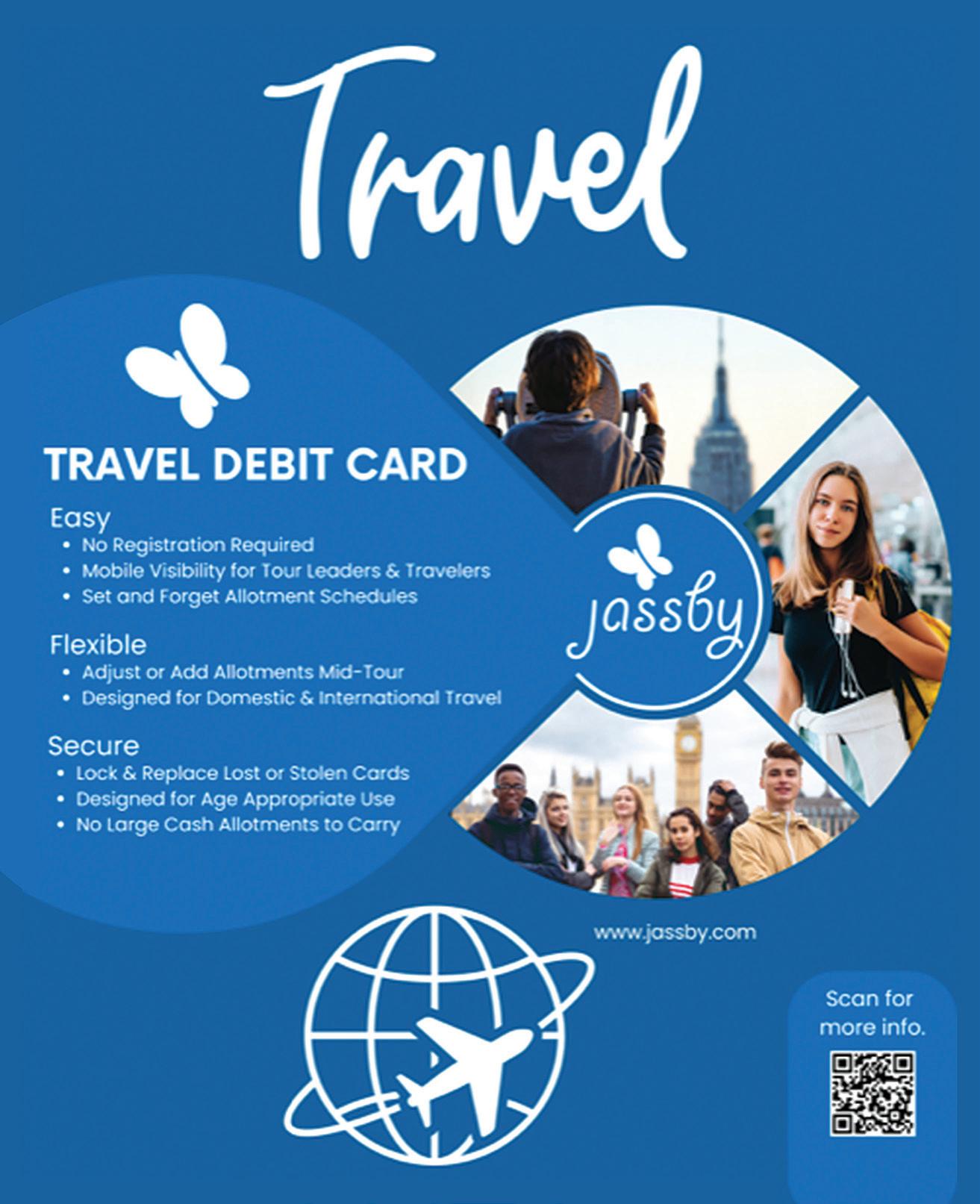
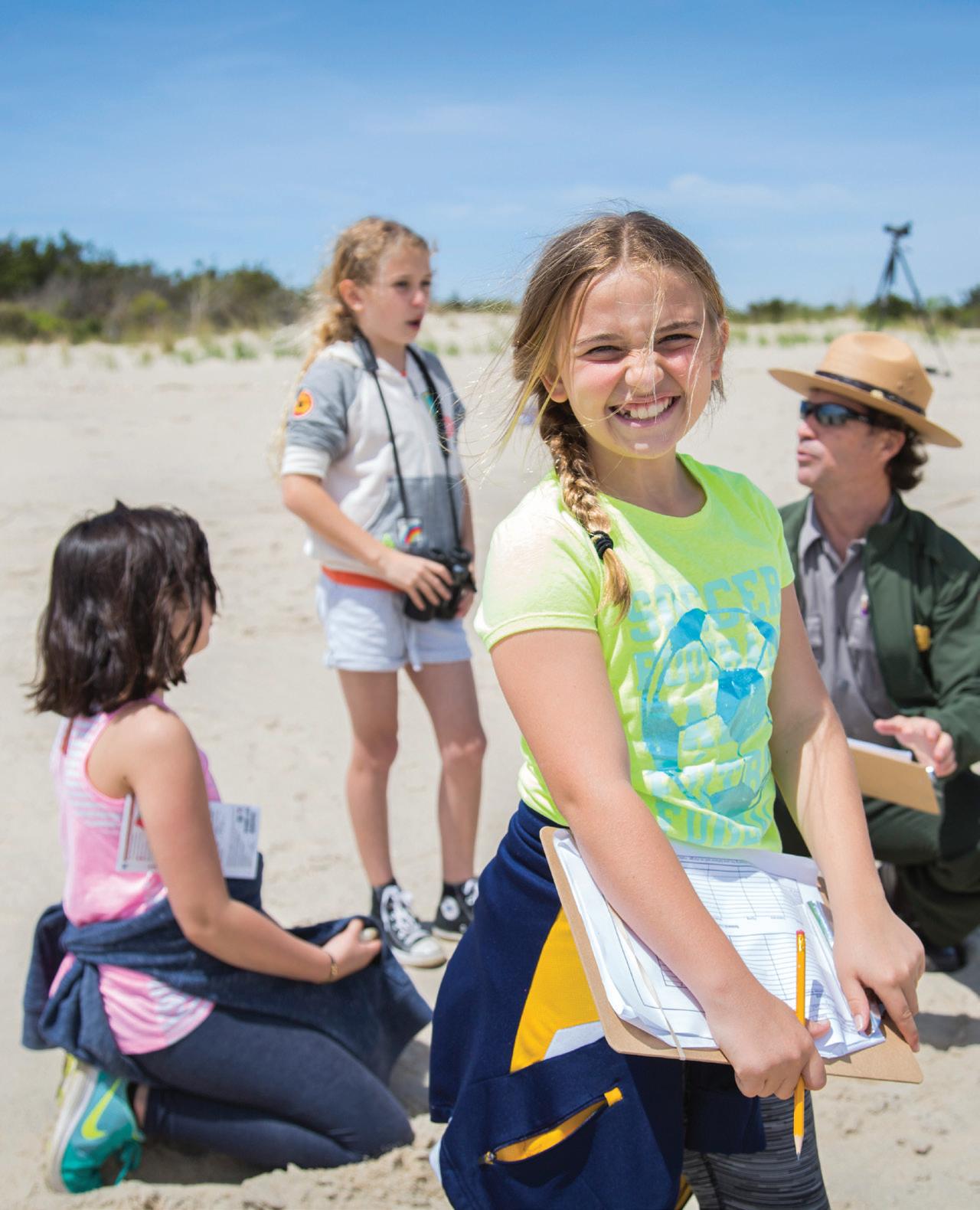
The National Park Service (NPS) and many state park departments cater to educational groups and student visitors seeking to learn about the environment and natural landscapes.

AN ABUNDANCE OF PROGRAMS AND FINANCIAL SUPPORT FROM STATE AND NATIONAL PARKS MEANS THAT TEACHERS NEED NOT STRESS WHEN PLANNING STUDENT TRIPS
By Billy StampflAwonderful world of experiential learning awaits in state and national parks throughout the U.S. When planning an escape from the classroom for your students, consider the great outdoors full of wonder, excitement and learning opportunities galore. The National Park Service (NPS) and many state park departments cater to educational groups and student visitors seeking to learn about the environment and our natural landscapes. Best of all, they operate generous grant programs with educators
in mind, including in Illinois, Indiana, Texas, and California, where you’ll find some of the most interesting, fulfilling and inspiring nature experiences imaginable.
While state park programs are lively and diverse, you’re within driving distance of a national park. The National Park Service (NPS) is renowned for prioritizing financial support for groups itching for an outdoor experiential adventure.
A phenomenal program administered through NPS is the Kids to Park Day School Grant Program, through which the National Park Trust awards grants to under-served schools to help students discover and explore public parks, land and waters. It has a noble purpose and is uniquely effective: In 2024, it selected 110 Title I schools as grantees, with each recipient receiving up to $1,000 to fund their park trip and nearly $150,000 being awarded in total. With a focus on studentdriven trips and student-teacher collaboration, the Kids to Park initiative makes wildlife exploration possible for students in hundreds of classrooms across America.
Every Kid Outdoors is a similarly purposed program put on by various participating federal government agencies, including the U.S. Forest Service, U.S. Army Corps of Engineers, U.S. Fish and Wildlife Service and the NPS. Designed for fourth graders, the initiative offers free activity guides for teachers, which include free access passes to all national parks, land and waters. Teachers simply need to understand and fill out online activity guides, then generate passes for their students.
Many states provide unique outdoor experiences for student groups throughout their parks. We’ve gathered several programs for examples of what states may offer.

Many states provide unique outdoor experiences for student groups throughout their parks.

Did you think the Golden State was all about Silicon Valley, flashy beaches and top attractions like Hollywood and the State Capitol in Sacramento? Think again because California’s other defining feature is its state parks.
One option for student groups is the Explore the Past Tour put on by Old Town San Diego State Historic Park. It is designed for grades K-12 and can accommodate up to 20 participants. In just one hour, students can explore San Diego’s rich history while enjoying a guided tour.
Click to learn more about California’s Explore the Past Tour
Donner Memorial State Park, the crown jewel of the Sierra Nevada Mountain range, also offers field trips. Teachers and other student travel planners can register in advance for this free offering, which brings to life the California emigrant experience at an elevation of 6,000 feet!
Click to learn more about Donner Memorial State Park CA Programs
The Illinois Conservation Foundation, run by Illinois State Parks, operates some of the country’s most exceptional outdoor programs. Through the state’s Historic Sites Field Trip Grants, teachers can apply for funding to take students on a field trip to study some aspect of Illinois’ history, from its development as part of the American frontier to contemporary life in the nation’s 21st state.
Click to learn more about Illinois’ Historic Sites Field Trip Grants
Similarly, educators can apply for the Biodiversity Field Trip Grants Program, another state parks-enabled program that prioritizes conservation and a greener future in students’ educations.
Click to learn more about Illinois’ Biodiversity Field Trip Grant
Indiana is one of the Midwest’s leaders in school and group programs, with the Indiana Department of Natural Resources leading the way.
Perhaps the best option for those planning a trip is the Outdoor Field Trip Grants Program, operated by Indiana State Parks and designed with one purpose: to distribute funds to public, private, parochial or home-school educators interested in taking students on field trips to an Indiana state park or reservoir. Available for grades K-12, the grants are extended between May 1 and June 30 every year, giving educators the opportunity to enrich their students’ lives through a better understanding of the Hoosier State’s diverse array of wildlife and natural habitats.
Click to learn more about Indiana Department of Natural Resources’ School & Group Programs

When planning an escape from the classroom for your students, consider the great outdoors, full of wonder, excitement and learning opportunities galore.

The Lone Star State is chockful of fascinating natural wonders, from canyons and creeks to desert animals like scorpions and snakes. Fortunately, Texas has more than just wildlife: it also offers dynamic programs for student groups.
One example is the Government Canyon State Natural Area, a 12,000-acre wilderness expanse just north of San Antonio. It features TEKS-aligned learning experiences in nature with ranger-led and self-guided tours. (TEKS refers to Texas Essential Knowledge and Skills in English language and arts). Rangerled field trips occur on Tuesdays and Thursdays from February through May and mid-September through December. Teachers and travel planners should schedule in advance to request an entrance fee waiver, which allows free entry for your group.
Other Texas state park offerings are suitable for families and student groups alike. For instance, Texas Outdoor Family provides camping workshops where groups can rent camping equipment and learn what it’s like to spend time outdoors.
The programs and offerings listed in this article are just some examples of what national and state parks bring to the learning table. There is a bevy of additional options from the National Park Service, and other states provide grants and financial support for teachers who want to take their students on enriching naturefocused trips.
Now that you have an in-depth look at what state and national parks across the U.S. have to offer, start planning your school field trip today . ■
STUDENT TRIP PLANNING IS MADE EASY WITH RECEPTIVE TOUR OPERATORS, AND WE SHOW YOU HOW WITH DETAILED EXPERT ADVICE
By Sue ArkoReceptive tour operators, usually local companies that specialize in travel planning services within their respective geographic areas, can be an invaluable tool for student group planners when building an itinerary. They help students better understand the destination and the local amenities that make it special. While haphazardly Googling or using AI to create an itinerary may seem like a viable option, the fine-tuned nuances and crucial details are often overlooked when doing so.
1
Receptive tour operators are experts in the destination and fill the gaps in online research. They provide ideas and deals that will make the trip special. They know the history, intriguing stories, and other interesting facts about the destination. Their wealth of knowledge comes from years of experience and data collected from the feedback from past tours. Receptive operators conduct the same or similar tours many times and continually improve the experience. Whether it’s choosing between different event formats, selecting topics for discussion, or allocating resources effectively, receptive operators provide valuable, often overlooked, insights.
2
LOGISTICS — Receptive tour operators know when ticketing is necessary and when tickets become available for booking, thus securing the best available time slots. They also know traffic patterns and the best times to visit
various attractions to alleviate crowds and lines. Receptive operators can help identify potential issues or concerns early on, allowing them to be addressed proactively. Logistical challenges often lead to dissatisfaction with the experience, and receptive operators alleviate the challenge and implement solutions before the group knows there is an issue.
3 CONTACTS —Through membership in professional organizations, such as
SYTA (Student Youth Travel Association), ABA (American Bus Association) and NTA (National Tour Association), receptive tour operators have the personal connections and relationships necessary for a seamless experience. They know who is on the other end of the phone if an issue should occur.
4
Often, by utilizing their contacts, receptive operators can provide valueadded activities or events at no additional cost. These are
inclusions that groups are not able to get on their own, like a behind-the-scenes tour, early entry or a private talk from a significant person.
— Receptive tour operators enable planners to tailor events or activities to better suit the preferences and interests of the group members. By understanding what participants want or expect, receptive tour operators can create more personalized
experiences that are likely to resonate with the students.
—
Rather than having to make countless phone calls to local hotels, attractions and restaurants, student trip planners can lean on the expertise of the receptive who does all the work and guides the group through the journey from beginning to end.
7
Receptive tour operators often receive discounted rates from hotels, restaurants, theaters and other attractions, allowing them to offer student group planners better rates
for specialized products and top-of-the-line service. This added to the cost of time and labor for planning, operating, and accounting of the tours is a significant overall saving.
— In today’s environment, liability insurance, as well as errors and omissions, are extremely important. Student travel planners need to understand and be comfortable with the personal liability that is involved in conducting the tour themselves.
— This is especially important on multi-bus tours. Receptive tour operators are the student group planner’s boots on the ground. They arrive at the hotel prior to the group, obtain the keys from the front desk and make sure checkin is fast and efficient.
10
— By utilizing the services of a receptive tour operator, student planners can offer more destinations and sell more tours because they already have a professional team of tour planners, operations associates and guides as part of their team.
iStock.com/Olga Kurbatova
So how do you find a quality receptive tour operator? This involves thorough research, careful consideration of factors like safety, educational value and affordability, and seeking recommendations from reliable sources. Here are some steps to help you find a reputable, receptive tour operator.
1RESEARCH ONLINE AND CHECK CREDENTIALS
— Start by researching receptive tour operators online. The SYTA website is a good place to start. Look
for companies that specialize in student group travel and have experience organizing educational trips. Websites, review platforms, and social media can be valuable resources for gathering information about different operators. Look for tour operators who are members of reputable organizations such as SYTA, ABA and NTA. Membership in these organizations often signifies a commitment to quality and professionalism.
2 READ REVIEWS — Pay attention to reviews and testimonials from other educators, schools, or organizations that have used the tour operator’s services

in the past. Positive reviews can provide insights into the operator’s reliability, safety record and the overall quality of their tours.
3
EVALUATE SAFETY MEASURES — Safety should be a top priority when choosing a tour operator for student groups. Inquire about the operator’s safety protocols, including their procedures for emergency situations, supervision of students and transportation safety standards.
4
ASSESS EDUCATIONAL VALUE
— Consider the educational value of the tours offered by the operator. Look for programs that align with curriculum objectives and provide meaningful learning experiences for students. Ask about educational resources, guided tours, and interactive activities that enhance the learning experience.
5 COMPARE ITINERARIES AND INCLUSIONS — Review sample itineraries and the range of services included in the tour packages offered by different operators. Compare
prices but remember to look at other important aspects. Make sure to compare the quality of the accommodation, meals, transportation options and any additional activities or attractions included in the tour.
— Don’t hesitate to ask the tour operator for references from other schools or organizations that have used their services. Contacting references directly can provide valuable insights and help you make an informed decision.
Consider Customer Service— Assess the level of customer service provided by the tour operator. Responsive communication, attention to detail, and willingness to address your questions and concerns are indicators of a reliable and customerfocused operator.
— Ask colleagues, fellow educators, or school administrators for recommendations. Personal referrals from trusted sources can help you identify reputable tour operators
with a proven track record of delivering quality experiences for student groups. You can also ask for referrals from local CVBs where you’re visiting since they are always a great area resource.
— Once you’ve narrowed down your options, request a detailed proposal from the tour operators you’re considering. Review the proposal carefully, and don’t hesitate to ask for clarifications or modifications to ensure that
the tour meets your specific needs and preferences. Integrating receptive operators into the planning process can help educators create more engaging, relevant, and successful tours by leveraging the collective wisdom with the preferences of each individual group. By following these steps and conducting thorough research, student group planners can find a quality receptive tour operator that offers safe, educational and memorable experiences. ■

Sustainable practices during student travel are paramount today. Mother Earth, our cosmic home, is battling severe afflictions brought on by centuries of neglect and exploitation at our own hands. She sneezes vicious hurricanes and tornados, coughs up relentless wildfires and irreversibly sweats melting glaciers—all symptoms of a planet pushed to the brink.
As stewards of this fragile orb, it’s our solemn duty to care for her and nurse her back to health. The antidote? Sustainable, eco-friendly student travel practices. This thoughtful approach to traversing the globe is about making mindful choices to reduce devastating environmental impacts. Follow these guidelines on your next field trip and feel good about your adventures.
Many people think their small changes won’t make enough difference to our planet’s destruction. That kind of thinking is what has led us to where we are. We can all do our part by implementing small but meaningful sustainable practices into student travel routines and daily life. While everyone should reduce, reuse and recycle, there are several green practices that will help heal our planet.
Prioritize quality over quantity and spend more time in fewer places. Immerse yourself in a destination and absorb its full culture, cuisine, history and attractions. Enjoy one area in-depth rather than adding ten or twenty locations to your itinerary.
Eat at community restaurants that use fresh, locally sourced ingredients. This supports farmers and agricultural operations in the visited community. Through culinary ethnicity, you will gain a deeper understanding of the people while engaging with locals and their businesses.
Sustainable practices include activities for student travelers like hiking, biking, kayaking and canoeing. Guided tours and experiences for students include nature walks/hikes, eco-tours and educational environmental tours, which are available at many state and national parks and wildlife areas.
While this should be practiced every day, it’s a major factor in sustainable practices, especially in fragile ecosystems. When touring natural areas such as wildlife preserves, parks or seashores, remember to view wildlife from a distance. Don’t disturb natural habitats and do not feed wild animals.
A huge and often underrated sustainable practice is offsetting your carbon footprint. There are several ways to do this, including investing in renewable energy projects like solar and wind and donating money to recognized and vetted sustainability campaigns. Student travel groups can get involved in reforestation efforts by planting trees in plundered regions. Aside from donating to this important cause, here are some things educators can do in and out of the classroom with students:
• One Tree Planted offers T.R.E.E.S., a free grade school program for K-12 full of incredible educational information and fun eco-activities.
• The University of Michigan provides remarkable K-12 STEM resources for teachers, including videos, podcasts, and activities for students to foster sustainable practices.
• The Arbor Day Foundation’s Tree Campus K-12 is an outstanding hands-on program. Group leaders can get schools and communities involved in planting and reforestation efforts.
Understand what environmental challenges your destination may face and practice eco-friendly travel accordingly. Students traveling abroad to tropical or frozen climates will encounter unfamiliar flora and fauna, leading to important lessons on the efforts needed to preserve them. Visit your destination’s local government website or contact the respective visitors’ bureau to find out more about these challenges and how to prepare your students.

Conserve water by utilizing reusable water bottles instead of plastic. You can also consider shortening your shower time and reusing towels instead of opting for freshly washed ones. Turn off lights, televisions, and other electronic devices when not in use to conserve energy. These practices significantly save precious resources.

Did you know that some hotel chains practice sustainability? Be sure to look for eco-certificates and awards usually found on hotel websites. Some include the LEED (Leadership in Energy and Environmental Design) Award given by the U.S. Green Building Council and prestigious Energy Star scores.
• Electric — Electric and hybrid rental vehicles are popular for those needing transportation and who are conscious of carbon emissions.
• Trains instead of planes — According to AAA, trains have the lowest emissions per passenger mile, making this form of transportation more environmentally friendly. Train travel also offers groups the opportunity to collectively witness scenery that is unique to their location.
• Sustainable flights — If you must fly, choose airlines that use sustainable aviation fuel. Select non-stop flights and remember to pack light. The heavier your suitcase, the greater the carbon emissions.
• Flight-Free or ‘Overland’ Travel — This type of travel requires no air transportation, and companies provide tours to local communities. It also allows people to spend more time in fewer places, thus reducing carbon emissions.
• Travel shorter distances — Localizing experiences significantly cuts down on carbon emissions. Explore undiscovered areas closer to home to lower your carbon footprint and absorb all that a specific place has to offer.
Eco-friendly practices aren’t difficult, but one must be cognizant of travel habits. Be mindful when packing for your trip, feel good about staying in an environmentally friendly hotel and enjoy participating in eco-friendly group activities. ■
Classic campus tours, open houses and overnight visits are three different types of college tours.
Preparing for college is a whirlwind, stressful endeavor for both students and parents. On top of the rigors of schoolwork, clubs and activities comes the long process of choosing the right school to attend. This article is designed to demystify the often complex world of campus tours. It aims to fill the gap between the common knowledge about campus tours and the detailed information that is rarely provided. We offer the following practical advice and considerations to help you create a well-informed and effective college campus tour itinerary for your students.


In some ways, this step intersects with the larger question of which colleges students choose. Ask your students these questions:
1. Do you want a sprawling campus with a massive student body or something more tight-knit?
2. Do you value high-caliber athletic programs or savor performing arts?
3. Do city locations appeal to you more than suburban or rural locations?
4. Most importantly, what subjects interest you? Are burgeoning engineering departments vital? A topnotch business school? Killer journalism courses?
Many don’t have these answers but that’s where organized group tours come into play. Arranged college tours, directed by individual schools or entire districts cut through the clutter, presenting a variety of options for all students.
There are many types of college tours to consider, and each is unique.
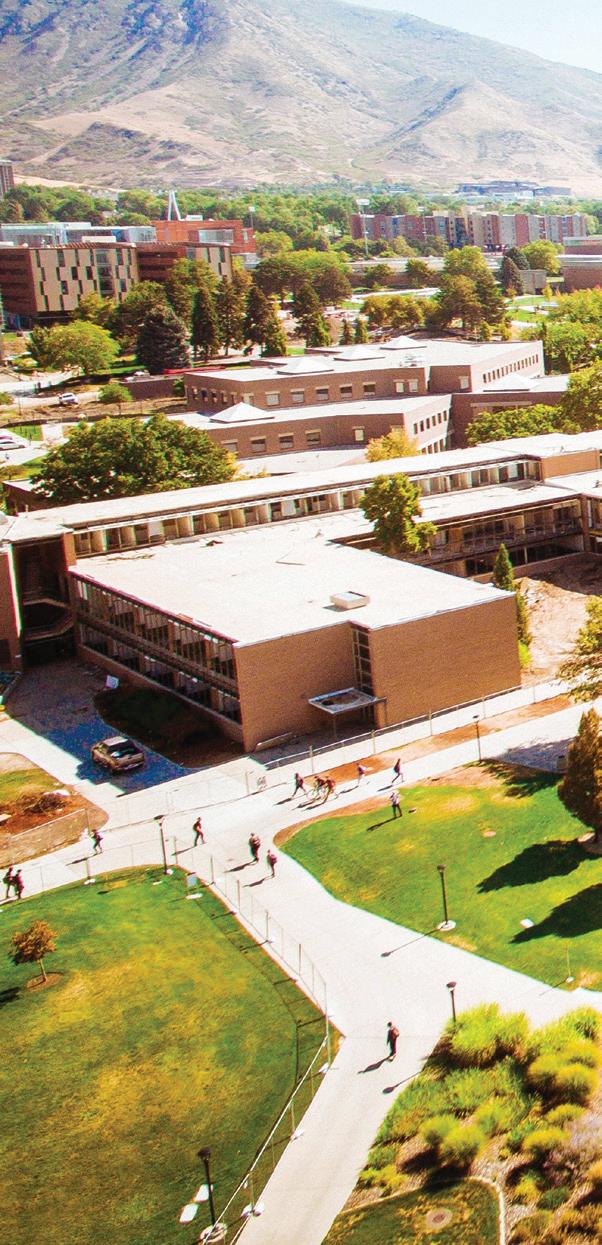
First, the classic campus tour is what most think of when planning a college tour. This traditional option gives you the chance to walk around the grounds, often on a pre-determined route as part of a group guided by a current student or admissions officer. If you are in a smaller group, you can ask to see areas of the campus and departments you are especially interested in.
Second, there are college open houses, which colleges and universities use to recruit prospective students. This is a great way to get a good feel for the school while hearing from current students, alumni and representatives from the housing department,
financial aid office and admissions department in theater-style presentations, followed by walking tours of campus.
Third, overnight visits are a relatively uncommon but informative option. Overnights allow touring students to shadow a current student across class and leisure time and spend a night in a residence hall. This immersive experience allows prospective students to understand what a day in the life of a student is really like.

The spring semester of a student’s junior year is the most popular time for college tours, but there’s no need to wait that long! Getting freshmen and sophomores thinking about college will help them better envision
HERE IS A SAMPLE
TWO-DAY COLLEGE CAMPUS TOUR ITINERARY:
DAY 1
9:00 a.m. – Depart school.
11:00 a.m. – Arrive at school tour #1, a large state university. Campus tour and lunch.
2:00 p.m. – Depart for school tour #2.
2:15 p.m. – Arrive at local liberal arts college. Presentation by the admissions department and campus tour.
4:30 p.m. – Depart for hotel.
5:30 p.m. – Arrive at your hotel.
6:30 p.m. – Dinner at a local pizza restaurant.
DAY 2
8:00 a.m. – Breakfast at your hotel.
9:00 a.m. – Tour #3 Meet & Greet and campus tour of a technical university.
11:00 a.m. – Depart for tour #4 at a nursing school.
11:15 a.m. – Presentation and cafeteria lunch at nursing school followed by self-guided campus walking tour.
1:30 p.m. – Depart for tour #5.
2:00 p.m. – Arrive at private university and join the campus tour.
4:00 p.m. – Drive home.
7:00 p.m. – Arrive home.


their future and start setting academic club and athletic goals to help them get there.
Campus tours are held year-round, with spring being more popular than fall. Some high schools elect to host college tours over long weekends or spring break, as these “off times” seldom collide with traditional collegiate breaks.
When you’ve nailed down the time of year, your next consideration is how long you should plan your tour.
If you’re in a major metropolitan area, it’s possible to plan a full-day college campus tour and, with some good timing, see up to three campuses. And since you want your students to see multiple options, anything requiring more than a few hours drive should be considered an overnight. While there are more logistical hurdles with overnight trips, this type of experience is a learning adventure for students – taking them out
of their comfort zone and into a new environment. Hotel stays, new experiences, group meals and bonding time with new friends all help your students visualize their future and stretch their social skills. When planning an overnight college tour, look for hotels in safe areas, within close proximity to campus and with included breakfast and competitive group rates.
This gets into the heart of your trip itinerary—where to go on campus. First, before even touching academic buildings or sports complexes, a piece of advice that most campus planning guides omit is to visit the surrounding area. This trip should be focused on helping students get a feel for the whole area, not just the student center and library. Go to local restaurants and shops; walk around the football stadium; take a drive through the outlying neighborhoods; venture out to an offcampus grocery store. These experiences will give students a taste of what the community is
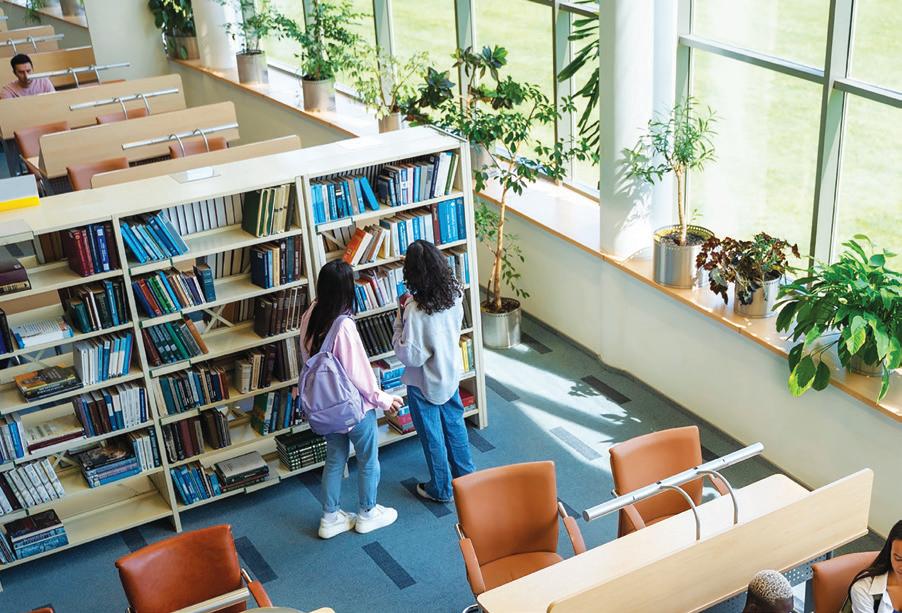
• Campus visits should be planned trips, not spontaneous adventures. Setting aside time for careful planning will allow you to make sure you gain an understanding of the school while following the other recommendations set forth here.

like and what options they will have.
When you’re back on campus, your tour should focus on the places of interest to your group. For those who expect to do most of their studying in the library, that should be the first place to visit on campus. Likewise, athletes should check out sports facilities; runners should take a walk or run around the campus track. All prospective students should tour dorms and the dining halls, two of the places in which they will spend a lot of their time. Whenever possible, include visits to specific academic buildings of interest to your students—savvy college admissions directors can arrange meetings with faculty and students in these departments.
Campus tours require careful trip planning surrounding important decisions, from where your group will visit on campus to when you will tour and what sort of visit you prefer. Options are abundant, making a detailed itinerary even more vital. With this in mind, you can help guide students through interactive experiences that will aid them in making the most important decisions of their lives. ■
• Motivate touring students to make their visits interactive: talk with current students, say hello to professors, and try to have conversations that enhance their feeling of what sets the school apart. Current students will probably tell the truth, so jump into conversations with them.
• Encourage students to take photos and videos. Especially if you’re seeing multiple schools, facilities can blend together, making the decision-making process more difficult. Have students take notes and save the pamphlets and recruitment papers provided by the schools. Not only memorabilia, they will provide helpful tools to students that can be valuable in reflection or if they need a reminder of anything they saw or did during the visit.
• While most organized campus tours take place over weekends, try a weekday visit to see the campus in a different light, buzzing when classes are in session and professors are actively lecturing. When high school holidays occur on Mondays, these are often the best times around which to build your trip itinerary.



TRY THESE UNIQUE FUNDRAISING IDEAS AND OPEN DONORS’ HEARTS AND WALLETS TO FUND YOUR KINDERGARTEN, GRADE OR HIGH SCHOOL TRIP
By Elise Mackanychtep away from the usual bake sales and traditional school fundraising ideas. Our innovative approaches are designed to not only raise funds but also to engage the community, fostering a sense of unity for a noble cause.
Prior to executing these unique fundraising ideas, it’s crucial to comprehend your community audience. Are they highly active? Do they have a penchant for supporting the arts? Is family involvement a prominent feature? By posing these questions, you can select the most suitable school fundraising idea for your students.
Once you’ve gauged community interest, contact different school boards to garner support from diverse sources, such as the Parent-Teacher Organization, the administrative team, and the event planning committee. These entities will assist in assessing interest and spreading the word about your school fundraising idea. The PTO can aid in reaching out to families, the administrative team can secure staff buy-in, and the event planning committee can provide valuable advice!
Gather support for your next student trip by hosting a Fun Run for the entire school as a unique fundraising idea. Fun runs are friendly races where people participate for enjoyment rather than competition. Participants can engage with this school fundraising idea by running or walking in the event or cheering on from the sidelines. Raise money by charging participants a small fee to run, such as $5 per runner. The run is ideally volunteer-led, so all the profits will go straight to your fundraiser. Take this event to the next level by adding a theme to the race like cartoon costumes, decades attire and animal runs!
More fitness-oriented school fundraising ideas include teacher vs. student games. Everyone loves seeing teachers engage with students in silly ways, so organize opportunities for them to compete in various sports games against each other. Publicize this event to the school community and charge a small fee to spectate, and you’ll be surprised how quickly this school fundraiser turns into a major donation.
Crafty School Fundraising Ideas with a Twist
Collaborate with the school’s art teacher and gather your students’ art projects to sell at a craft fair. Whether your students are making art at home or in school, collect some of their work, organize a sale and sell to community members, teachers and families. Host the event in front of the school during dismissal to maximize exposure to families or set up in a neighborhood park to reach more members of the community. Extra points for getting the art teacher to assign projects solely for the purpose of selling at this school fundraiser. Clear out your closets to contribute to another unique fundraising idea - a community yard sale. Ask friends, family and students to donate clothes, shoes and household items for a classic yard sale. Post flyers, spread the word, and organize a time to host this sale where all proceeds go to your class field trip. To spice this classic yard sale up a bit, bring in some fun, interactive games and activities.


Photo booths are fun, interactive, and easy fundraising ideas for your next field trip. In the age of social media, getting a cool new shot for Instagram is a major win! Photo booths can work as standalone fundraisers or are easily added to almost any event. Set up a booth at a sports game, talent show, or school party to give students a memory to share. You can open this opportunity up to the entire school community, including families and staff. Bonus points if you can get some pets in the shots! Find some funny pet accessories as props to get the whole family involved. You can reach out to local vendors to find a pre-made photo booth, or you can take the DIY route by finding affordable backdrops, cutout props, and silly accessories!

To fundraise for your cause, sell the photo op for an affordable price. If you want to take this photo booth to the next level, take photos on a Polaroid and sell the physical photo for a slightly increased price. The nostalgic film aesthetic and tangible item are both reasons to opt for a Polaroid shot!
Host a talent show open to the entire school community to showcase student and staff talents. By charging a nominal entrance fee, this unique fundraising idea will engage viewers while raising money for your trip. Encourage individuals and groups to participate and publicize the event in school newsletters and posters to increase exposure.
Take these talents to the next level by hosting a Dance-A-Thon! Organize a space, set aside time, and recruit participants to dance for as long as possible. Similar to a walk or runa-thon, sponsors donate money per increment of time participants dance for. Extra points for getting the principals or teachers to dance!



5 5

Everyone has a blast playing games…so why not do it for a good cause? Organize a trivia or Bingo night where players can participate by paying a few dollars. Ideas include a chess tournament, playful poker night or even a spelling bee. For extra fundraising efforts, sell snacks and drinks to hungry gamers.
6 6
In addition to these out-of-the-box school fundraising ideas, don’t forget to set up a crowdfunding page, where anyone can donate to your cause through an online platform. This strategy allows family and friends from far away to send money even though they can’t participate in your planned activities. Be sure to post this opportunity on social media pages to maximize outreach to your networks. Be creative with your fundraising slogan and page design to attract donors.
Launch a digital campaign in addition to a classic crowdfunding page. Utilizing and leveraging digital platforms is a dynamic and simple fundraising strategy. Whether you set up a social media challenge, online auction, or Instagram sale, you can create a donation approach that is easily shareable and taps into a broader audience. With intentionality, a bit of organizing and community involvement, fundraising can be a fun activity. From this wide range of school fundraising ideas, your students are sure to raise sufficient money for their next adventure! ■
EVERY STUDENT TRAVEL PLANNER WANTS TO CRAFT THE PERFECT ITINERARY. A COMMON PROBLEM? BUDGET CONSTRAINTS. HERE’S HOW TO PLAN AN ECONOMICAL, TOP-NOTCH TRIP FOR STUDENTS
By Billy StampflBudget constraints are a practical reality—student travel planners know firsthand the pain of having an exceptional adventure mapped out only to realize that the funds aren’t available or that the beautiful hotel and guided tour aren’t feasible. Fortunately, there are ways to overcome these budget constraints, transforming your frustration into a triumphant sense of accomplishment. This article equips you with the tools to successfully navigate budget constraints as you outline your student trip.
Start early, make and monitor a budget, and carefully research which destinations boast the best options for gradeappropriate fun learning experiences.

The practical tips in this article become more straightforward—and costs become lower— when you start planning early. For instance, plane tickets are often cheaper when you book six months before departure rather than three weeks out. Starting early also leaves you more time to identify potential scholarships, grants and other sources of funding. This early planning also provides a comforting sense of security and peace of mind, reassuring you that you have everything under control.
There is no way to manage budget constraints if you have no budget to follow. Thus, as you start assembling your trip components, you should create a written financial budget. You should specify the following components:
• Transportation
• Accommodations
• Meals

• Attraction admissions
• Tour guides
• Travel insurance
• All taxes, fees and gratuities
By creating and diligently monitoring a budget, you’ll not only feel responsible and in control of your finances but also ensure a smooth and stress-free planning process. This approach allows you to allocate funds wisely, ensuring that every aspect of your trip is accounted for.
When planning a trip on a budget, it’s worth considering less-explored locales versus big, expensive cities. You’ll often find unique experiences at a fraction of the cost of popular tourist destinations. Aside from aligning with educational goals and affordability, consider the following when choosing your field trip destination:
• Consider student interests: Survey students to understand their interests and preferences. Find a destination that aligns with their curiosities and passions.
• Evaluate safety and accessibility: Research the safety conditions, accessibility for students with disabilities and any potential risks or travel advisories for the destination.
• Assess logistical feasibility: Consider the distance, transportation options, accommodation availability and overall cost to ensure the trip is logistically feasible for your group.
• Explore cultural immersion opportunities: Look for destinations that offer opportunities for cultural exchange, interaction with local communities and exposure to diverse traditions and perspectives.
• Check for age-appropriate activities: Ensure the destination offers activities and experiences suitable for the age group and maturity level of your students.
• Consider educational partnerships: Explore opportunities to collaborate with local schools, universities or educational organizations at the destination for enriching experiences.

• Evaluate climate and seasonal factors: Consider the weather conditions and seasonal events that may impact your trip’s timing and activities.
• Seek input from colleagues and experts: Consult with other educators, travel professionals or local experts who have experience with potential destinations.
• Involve students in the planning process: Engage students in researching and evaluating potential destinations, fostering ownership and excitement for the trip.
Mirroring your host destination in what you eat is an effective way to accomplish three objectives: saving money on dining out, immersing your group in the local culture and practicing sustainable travel.
Culinary customs should always be considered when embarking on a new adventure, so try to find budget-friendly meals that are authentic to the locale. Many destinations are happy to include student groups in their culinary culture. Some examples include:
• Arrange for a home-cooked meal with a local family: Many communities are open to hosting student groups for a traditional meal prepared in a local household. This allows students to experience authentic home-cooked dishes and observe local cooking techniques and customs.
• Visit local markets and street food vendors: Explore local markets and try street foods that are popular among the local community. This can include trying fresh produce, local delicacies, and traditional snacks.
• Participate in a cooking class or
demonstration: Attend a cooking class or demonstration led by a local chef or culinary expert. Students can learn about the ingredients, cooking methods, and cultural significance of traditional dishes.
• Dine at locally-owned restaurants: Instead of chain restaurants, seek out small, familyowned eateries that serve authentic local cuisine. This supports local businesses and provides an opportunity to try dishes prepared by members of the community.
• Attend a food festival or cultural event: If the field trip coincides with a local food festival or cultural event, it can be an excellent opportunity to sample a wide variety of traditional foods and learn about their significance.
• Participate in a farm or food production visit: Visit a local farm or food production facility to learn about the agricultural practices and food production methods of the community.
• Engage with local culinary experts or food historians: Arrange for local culinary experts, chefs, or food historians to provide insights into the cultural and historical significance of the community’s cuisine.
The key is to seek out authentic experiences that allow students to immerse themselves in the local food culture, learn about traditional ingredients and cooking techniques, and engage with members of the host community.
Another necessity when planning a student trip on a budget is keeping accommodation costs down. For this, you should negotiate with hotels for student group rates, which many

Many destinations are happy to include student groups in their culinary culture.
hotels—even the most prominent chains— offer. For such negotiations, be prepared to provide the hotel with the approximate number of sleeping rooms needed and ascertain if there are certain times when rates are lowest. Hotels have policies geared towards groups; for example, hotels generally offer one free room for a given number of reservations, typically 15-25.
Negotiating with hotels directly can be challenging for an inexperienced planner, so look to online hotel booking services like Hotel Planner and Groups 360.
Also, look for hotels with breakfast included— this saves money and is more convenient than taking your group out for breakfast, which cuts into valuable itinerary time.
It’s important to realize that the most memorable journeys can be budget-friendly and affordable if you consider the steps above. Start early, make and monitor a budget, and carefully research which destinations boast the best options for affordable lodging, food and gradeappropriate fun learning experiences. ■
DISCOVER TECHNIQUES FOR ENCOURAGING STUDENT INVOLVEMENT DURING GROUP TRAVEL WHILE PROMOTING RESPONSIBILITY AND CREATING AN ENRICHING JOURNEY FOR ALL
By Courtney LindGroup travel presents a fantastic opportunity for students to learn, grow and bond with their peers. Whether it’s a field trip, a performance opportunity or a multi-day excursion, traveling with a group of students can create unforgettable memories and teach valuable life lessons. While exploring classroom subjects in the real world may be the initial goal of any student travel experience, the life experience and independence that comes with it is a bonus. Group travel offers a unique
chance for students to take on leadership roles and develop a sense of responsibility while experiencing something new and exciting.
We’ve compiled five strategies and activities that are perfect for empowering student leaders and fostering responsibility during group travel. By encouraging active participation and providing students with a sense of authority, you’ll see that they are more likely to be engaged in the activities on the agenda, making it a win for everyone involved.

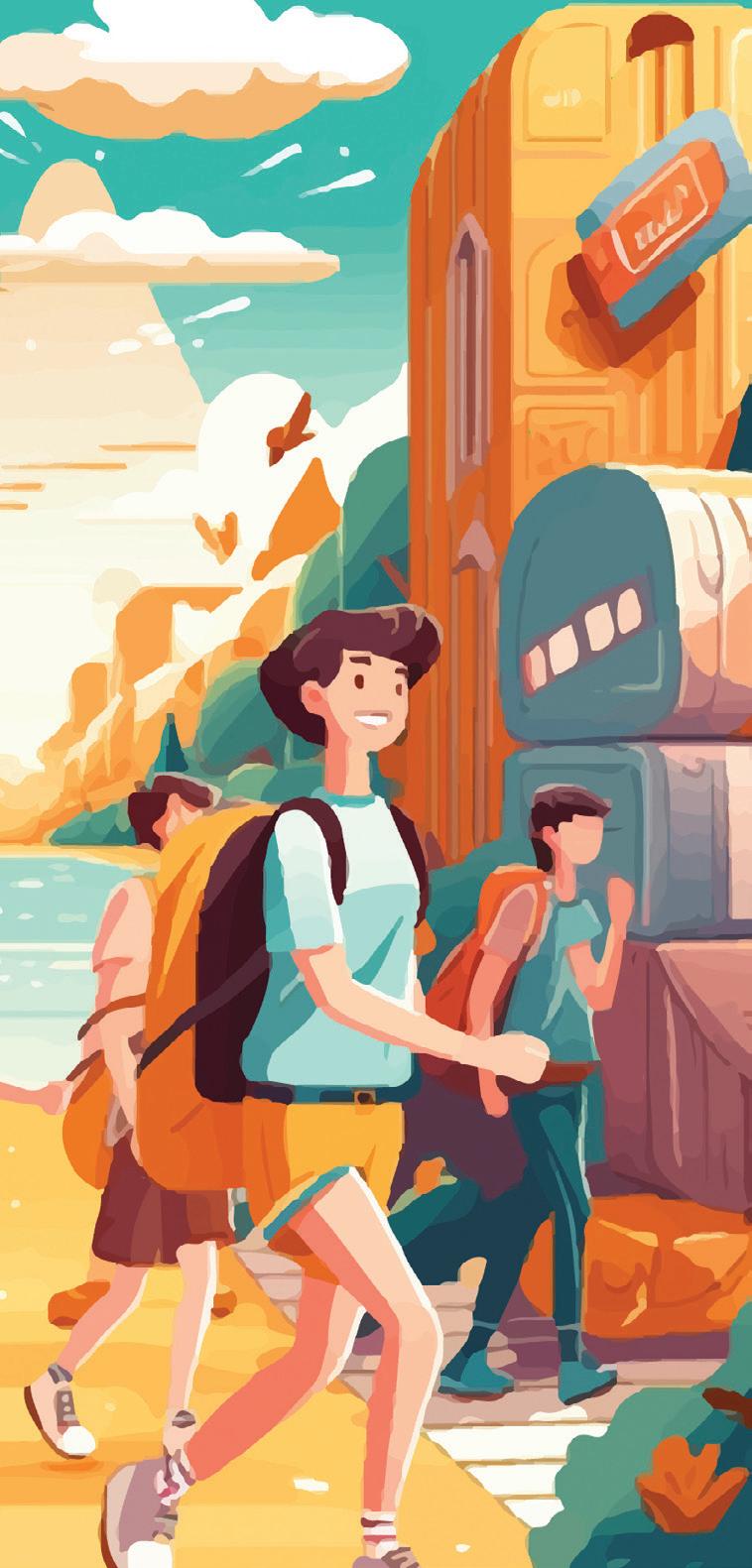
Before the trip, it’s crucial to establish clear expectations for behavior, responsibility and safety with your students. Provide them with background on where they will be going, how they will get there and what will take place during the day(s) of your visit. Traveling as a group means interacting with the public in ways not traditional of a normal school day, so be sure to outline what this will look like. This can also be an opportunity to show photos or videos of the destination and even provide a little history if it’s relevant.
• Taking public transportation? Discuss how the system works and common courtesy. Taking a motorcoach? Outline safety protocols and expected behavior while on the bus.
• What locations will students be visiting during the day? Give them a sense of each destination and the overall vibe they can expect.

Discussing expectations prior to a trip will help students feel better prepared.
Whether it’s a museum, a theme park or something in between, letting students know the protocol up front is the way to go.
Setting expectations while outlining the agenda prior to traveling will help students go in feeling prepared. And for those who might be anxious about venturing outside the classroom, knowing what to
expect can be a big weight off their shoulders. With this preparedness comes a sense of inclusion, as students will feel they’re a part of the travel experience rather than just being along for the ride.
Empower students by assigning them specific
leadership roles, such as team captain, group spokesperson or student monitor. This gives them a sense of ownership and accountability, in turn making them more engaged in the activities at hand. Be sure to outline the specific roles and tasks assigned to each student leader and provide the tools they need to succeed. Looking for some examples of studentfocused roles?
• Documentarian: Tasked with documenting the trip through photos, videos, or journal entries, capturing important moments and observations.
• Safety Officer: Ensures that all safety guidelines are followed, keeps an eye out for potential hazards and assists in emergency situations.
• Environmental Steward: Encourages responsible behavior towards the environment, such as picking up litter, respecting wildlife and minimizing ecological impact.
• Team Leader: Acts as a point of contact between the group and the teacher or chaperones, relaying information and addressing
any concerns, and ensures everyone feels included and valued.
By assigning these roles, you can empower students to take ownership of their experience, develop leadership skills and contribute positively to the success of the field trip. You may find it beneficial to break up your group into smaller teams, too. In either case, assigning roles to students keeps them focused and integrates a leadership piece to the day’s activities.
Don’t let student travel be a one-way street. While there may be plenty of time for teachers or onsite leaders to present to student groups directly, it’s important that students are involved throughout the process and given ample time to engage with questions, activities and problem-solving scenarios. This not only helps them learn to communicate effectively but also fosters a sense of unity within the group.
• Provide students with activities that incorporate planning, observation and decision-making, and break them into small groups if needed. You may want to use tools such as worksheets or apps to provide structure, or perhaps students bring along their notebooks to jot down observations and questions.
Giving students a choice when it comes to various parts of the travel experience also fosters a sense of involvement. Maybe it’s voting on activities or helping to manage a budget. Consider actions that allow for decision-making skills, as these help to give students a sense of responsibility over the travel plans.
On your trip, students can bring along their notebooks to jot down observations and questions to provide structure.
Gamifying the student travel experience fosters excitement, curiosity and active learning among students.

Make any activity into a game and you’re sure to pique students’ interest. Incorporate elements of competition, collaboration and exploration into the day’s activities as a way to encourage engagement while getting everyone in on the fun. This also presents an opportunity to assign roles and leadership positions.
• Create scavenger hunts or treasure hunts related to the destination or learning objectives. Students can work in teams to solve clues, complete challenges, or find specific landmarks or objects within the field trip location. Select one student per group to be the spokesperson for an added responsibility.
• Design role-playing activities where students
assume the roles of historical figures or characters relevant to the trip, engaging them in interactive storytelling and problem-solving. Introducing point systems, rewards or badges for accomplishing tasks or demonstrating knowledge can further incentivize student engagement and participation.
• Integrating technology such as educational apps
or augmented reality experiences can enhance the gamification aspect and provide opportunities for immersive learning.
By gamifying the student travel experience, teachers can foster excitement, curiosity and active learning among their students while still achieving all of their educational objectives.
It’s important to acknowledge and celebrate the achievements of students during and after the trip. Just getting out of the classroom and engaging in a new experience can be a lesson in stepping out of one’s comfort zone, and that’s something to be proud of. Recognize the hard work, dedication and contributions of your students and how they led to the trip’s success.
• Consider awards for students such as “Leadership Excellence Awards”, “Collaboration Champion”, “Team Spirit Award”, “Responsible
Traveler”, “Curiosity Award” or any number of others. These can be given to individual students or to groups.
• For a lesson in democracy, have students vote for a
Peer Recognition Award. This gives students a chance to recognize one another and reflect on contributions from the trip.
Take time in the moment and after the trip to reinforce positive actions of your students. A group debrief is also a great way to bring things full circle and allow students a chance to provide feedback on their travel
experience, furthering their sense of inclusion.
Group travel can be a transformative journey for students, providing them with opportunities to develop leadership skills, responsibility and independence. Venturing outside the classroom is the perfect opportunity to instill these values in your students. By setting clear expectations, assigning leadership roles and offering guidance and support, you can empower student leaders and create a positive and enriching experience for everyone involved. ■
WE HELP YOU CRAFT A FUN AND ENGAGING EDUCATIONAL STUDENT ITINERARY PACKED WITH EXCITING LEARNING IN REAL-TIME
As an educator or trip organizer, field trip planning can be a rewarding experience if you have a clear roadmap and tips for creating an engaging itinerary. It’s crucial to design field trip itineraries that not only offer fun activities but also provide intellectual stimulation and opportunities for experiential learning. This approach fosters a deeper understanding and retention of knowledge among students. By strategically planning your field trips, you can create a balance between educational value and exciting adventures. This approach ensures that students not only enjoy the trip but also gain maximum educational value, turning field trips into immersive and memorable learning experiences. Here is a guide on how to craft student itineraries for field trips that are not only entertaining but truly enriching, intellectually stimulating and unforgettable.

With a range of educational field trip destinations, student groups can immerse themselves in Philadelphia’s past and present while creating unforgettable memories.

One of the most impactful strategies to boost the educational value of a school field trip is to integrate the itinerary with your classroom curriculum. By planning your field trip in conjunction with your curriculum, you ensure that the trips content directly complements what students are studying, making their learning experience more comprehensive and meaningful. Planning your curriculum and field trips together allows you to seek out destinations, landmarks,
museums, parks, and experiences that directly relate to and expand upon what students are learning in the classroom. Not only are you saving yourself time by planning both together, but your curriculum can also provide a crystal-clear map for topical and sensical field trip planning.
For example, a history class studying the American Revolution will get far more educational value out of a trip to Boston steeped in significant historical sites versus a more generic itinerary that visits a history museum, which provides little experiential components.
Start at the Boston Massacre site for an immersive historical reenactment. Then, visit the Old South Meeting House, the staging ground for protests like the Boston Tea Party. End the day at the Boston Tea Party Ships & Museum, where you can participate in interactive multimedia experiences. Walk the famous Freedom Trail, passing sites like the Paul Revere House, Old North Church and

Bunker Hill Monument.
Tour Harvard University’s historic colonial-era buildings. Have lunch in America’s oldest public park, Boston Common.
Travel to Lexington & Concord’s Minute Man National Historical Park, witnessing the hallowed grounds where the first Revolutionary War battles occurred. Tour the Hancock-Clarke House where Hancock and Adams took refuge. Conclude at Emerson’s house and Old Manse, two historic Concord sites intertwined with the Revolutionary era.
By carefully curating a field trip itinerary that directly aligns with their curriculum, students can experience history in a tangible way. This reinforces their classroom learning and creates lasting memories that will solidify their understanding of this pivotal era in American history.
Students learn about the diverse range of people who powered the American Revolution during a school trip.
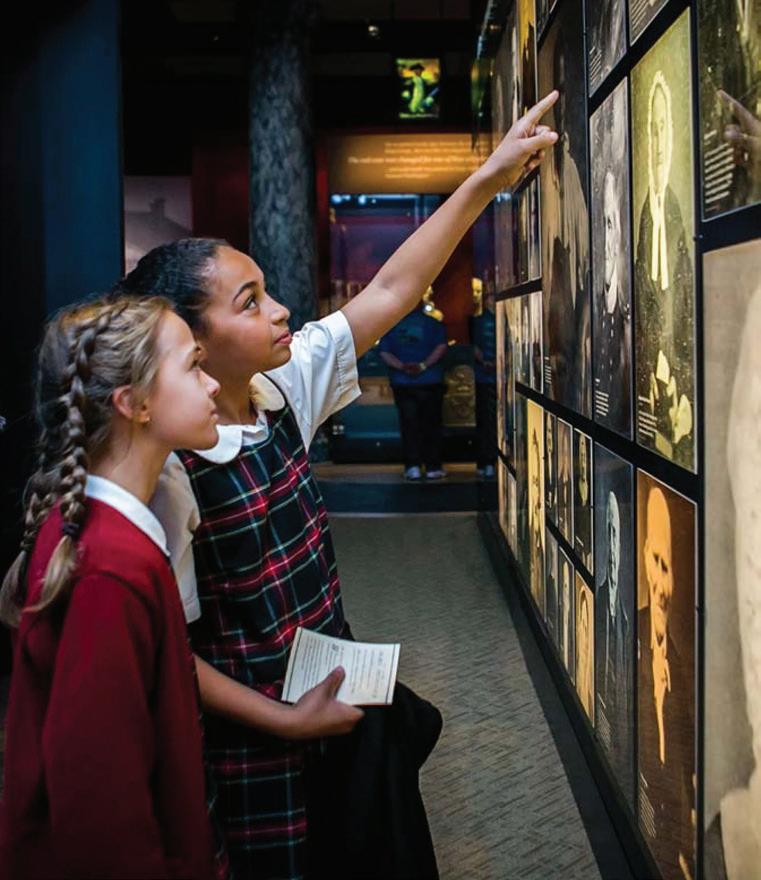
Students absorb and retain more information through experiences, and reflection is a key component of experiential learning. Consider building time into the itinerary for students to reflect on what they’re seeing, doing, and learning while on the trip, while the information and experiences are still fresh. This could take the form of journaling prompts, small group discussions, or a creative activity like drawing or photography accompanied by student impressions. Encouraging students to actively process their experiences in real-time with an activity will help them solidify what they’ve learned and integrate it into their classwork later.

Travel offers students incredible opportunities to experience different cultures firsthand. Whenever possible, consider including authentic cultural activities or interactions with the local community on your itinerary. This could be a hosted meal at a local family restaurant, a neighborhood walking tour led by residents, or a school visit to meet and engage with local students. Cultural immersion fosters greater global understanding and social skills in all facets of a student’s life. Perhaps there are cultural landmarks or museums showcasing artifacts related to the area. Many places have regional museums that provide guided tours and class lectures, providing enriching experiences for students while supplementing their classroom education.
Lectures and tours certainly have their place on class field trips, but students learn best by doing and engaging their left and right brains at the same time. Look for interactive workshops and classes relevant to the trip's educational themes.
• For a marine biology-focused itinerary, check if the local aquarium offers a dissection lab for high school groups.
• Culinary arts students will gain much from a hands-on cooking class in regional cuisine for grades 8-12.
• At Plimoth Patuxet Museums in Massachusetts, students can partake in Wampanoag Workshops, learning traditional skills like hide tanning, pottery, and gardening directly from Native educators. They offer workshops for pre-k to college students.
• The National World War II Museum in New Orleans features many STEM workshops and student programs for multiple grades. They also provide Field Trip Plus for an immersive 45-minute, museum educator-led interaction for student groups grades 3-12.
• At the Museum of Science in Boston, students can participate in hands-on engineering workshops where they design, build, and test prototypes like wind turbines, ensuring an immersive STEM learning experience.
• George Washington’s Mount Vernon estate offers an interactive Colonial Classroom program, allowing students to step into the roles of students from the 18th century, practicing penmanship with quill pens and exploring early American curriculum.
While it’s good to have a thorough student itinerary, be sure to also give children some freedom to follow their own curiosity. Unscheduled time to explore a museum, gallery or neighborhood lets students delve into what interests them most.
Having a choice in their own learning path boosts engagement and takeaways. If a child or group of children show a keen interest in sharks while at the aquarium, have a parent or teacher stay with them for some extra time at the shark exhibit to ask questions and interact with the sharks along with the staff.
The vendors and suppliers you select can greatly influence a student itinerary’s educational value. Seek out accommodations, restaurants, tour providers and activity partners that share your learning objectives. Many vendors and suppliers offer educational programs or content designed specifically for student groups. Ask about customized classes or tours aligned with your curriculum. With a learning-centric approach to student itinerary design, class trips become more than just a fun getaway—they’re a meaningful extension of the classroom. Educational travel helps students develop critical thinking, cultural sensitivity, a broadened worldview and curiosity that will serve them well at school and beyond for years to come.

Enlisting local experts as speakers, guides or facilitators can elevate an itinerary’s educational quality. Reach out to university scholars, scientists, artisans, and community leaders at your destination who can share their niche expertise with students. A great place to start is your destination’s local visitors bureau.
• A geologist’s guided hike that will illuminate more than just the typical sights.
• An oceanographer could do a hands-on workshop at the lab or on the beach where children can interact with wildlife and ask questions.
• An archaeologist may organize a mock dig site and bring artifacts for students to examine while teaching excavation and preservation techniques.
Experience hands-on animal encounters at St. Louis Aquarium at Union Station.
• A meteorologist might conduct an interactive workshop on weather and astmospheric science.
The Palm Springs Air Museum in California offers engaging Youth Tours that educate students about aviation history, science, and technology.
The largest region of the country, the Western United States is also the most geographically diverse with rainforests, high mountain ranges, glaciers and more than its fair share of desert areas. This hard-to-define quality also makes this area all the more interesting for you and your students with a seemingly never-ending option of different experiences to enjoy.
55 Palm Springs Air Museum
56 Texas Rangers Hall of Fame and Museum

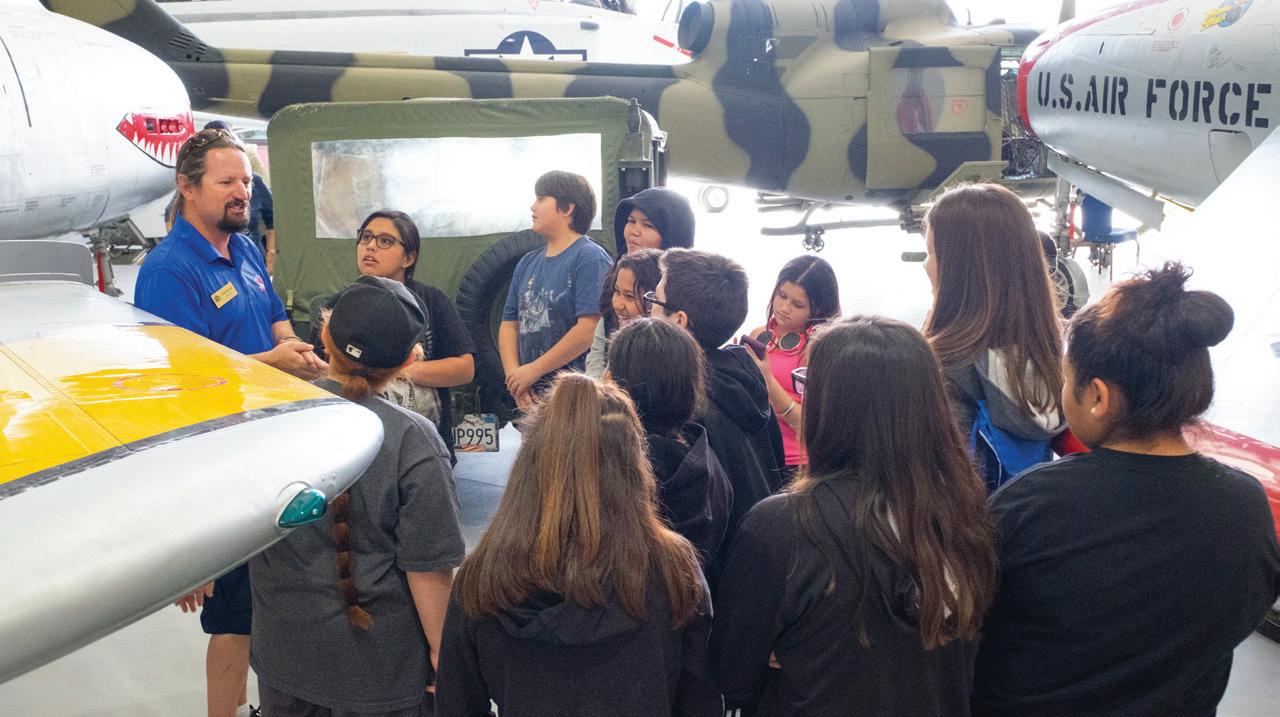
The Palm Springs Air Museum is dedicated to honoring veterans and educating youth about sacrifices made on their behalf. We offer engaging Youth Tours that educate students about aviation history, science, and technology through interactive exhibits and guided tours that start with a 30-minute Aviation Science Class. Thanks to generous funding, free admission, student lunches, and bus reimbursement are available for regional public schools. Dine at the museum’s cafe or bring lunches. Advance notice and adult chaperones are required.
PALM SPRINGS AIR MUSEUM
Maria Wren, 760-482-1839
education@palmspringsairmuseum.org palmspringsairmuseum.org


ASCERTAIN THE RANGER WAY ON A CLASS TRIP TO THIS EXCITING MUSEUM FOR A STEP BACK IN TIME TO THE EARLY 1900S AND THE LAWS OF THE LAND
“One riot, one ranger” is a phrase made famous by Texas Ranger Captain W.J. McDonald in the very early 1900s. McDonald was called upon to stop a forbidden prize fight and ease an angry mob. When stepping off the train by himself, the puzzled
mayor asked, “Where are the others?” To that, McDonald replied, “Hell, ain’t I enough? There’s only one riot, isn’t there?”
It was the reputation of the early Texas Rangers that personified an icon of rugged individualism, courage, honesty and virtue. They
have created an image that criminals fear and children idolize. They celebrated their 200th anniversary in 2023.
The official Texas Ranger Hall of Fame & Museum is conveniently located off Interstate 35 in Waco, TX. Students learn about the history of the Texas Rangers
through exhibits, which include badges, firearms, photographs and other artifacts. In addition, children will enjoy a bandit hunt. Texas Highways magazine readers ranked it one of the Best Texas Museums, USA Today called it one of the nation’s outstanding Halls of Fame, and True West Magazine titled it the Best Western History Museum in Texas.
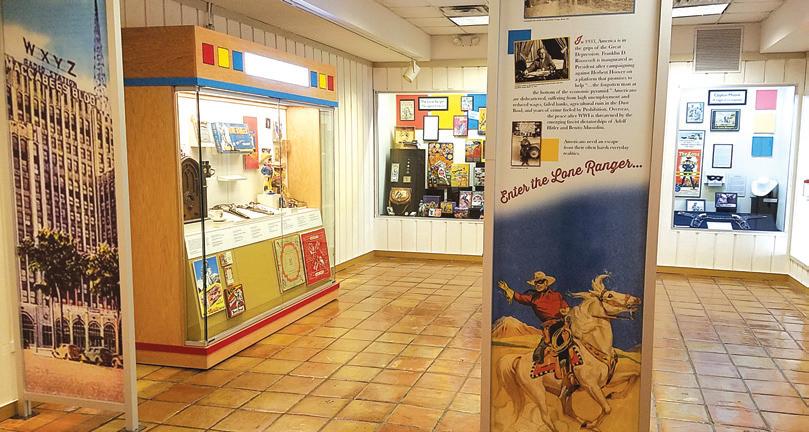
A new Family Reading Room has opened and offers Story Time for your class. Group rates are available. Guided tours can be booked at least 2 weeks in advance of arrival with staff availability.
info@texasranger.org
TexasRanger.org

Voted one of the best aquariums in the country, Newport Aquarium offers a chance to interact with penguins, sharks and stingrays.
The Midwest region is renowned for its rich history, encompassing the pioneering spirit of westward expansion, its pivotal role in the Underground Railroad and the industrialization that fueled America’s growth.
60 Cincy Region
64 Chanhassen Dinner Theatres


Sign up for our newsletter to unlock a treasure trove of innovative field trip resources, engaging lesson plans, and exclusive educational travel discounts tailored just for you. Stay ahead of the curve and receive priority access! Delivered straight to your inbox. You’ll also receive priority access to our annual digital magazine, field trip guides and special reports.

SUBSCRIBE NOW!
THE CINCY REGION IS BRIMMING WITH INCREDIBLE CUISINE, VIBRANT ART, AND HISTORY GALORE AT MUSEUMS AND NATIONAL HISTORIC SITES
Filled with student-friendly adventures, Cincy offerings include tours of the famed Cincinnati Music Hall and a ‘Sites and Bites’ exploration of the city complete with street art, authentic fare, and diverse culture. Wild adventures await at the Cincinnati Zoo & Botanical Garden, the second-oldest zoo in the country, or during a behind-the-scenes Aquarium tour. Take a dinner cruise for a fun voyage along the banks of the Ohio River. The Behringer-Crawford Museum and an ArtWorks Mural Tour of downtown will inspire visitors through unique paintings and eclectic depictions. The Cincy Region has a little bit of everything sure to please your entire group.

Lorey Hall
Leisure Sales Manager Office: 859-261-4677 Direct: 859-655-4151
lhall@meetnky.com visitcincy.com/groups





Arrive at your host hotel.
STOP 1: Cincy Top 10 ‘Sites and Bites’ City Tour – 3-hour guided tour that includes lunch. This tour showcases Cincinnati’s history, street art, and culture, as well as sampling some Cincinnati food staples!
STOP 2: Behringer-Crawford Museum – Situated in Devou Park in Covington, this museum offers exhibits on Northern Kentucky’s cultural heritage, natural history, and art. It’s a
great place for students to learn about the region’s rich history and diverse communities.
STOP 3: National Underground Railroad Freedom Center – Located on the same riverbank where escaping Civil War slaves crossed on their journeys north to freedom, this moving, multifaceted museum examines the ongoing struggle for equality both in America and all around the world. Return to your hotel pool for a pizza party.
Enjoy breakfast at your hotel.
STOP 1: ArtWorks Mural Tour – Cincinnati is an awe-inspiring, colorful art gallery. Walk through historic streets and explore our city’s impressive collection of monumental murals in the downtown area.
STOP 2: Tour Music Hall – Cincinnati’s Music Hall has been a community gathering place for over 134 years. Built in 1878, it retains the elegance of Old World décor, yet updated to meet contemporary standards in technical equipment and amenities. Music Hall is home to the largest theaters and ballrooms in the Greater Cincinnati Area. In fact, it houses the country’s fifth-oldest Symphony Orchestra, second-oldest Opera Company, and longest-running choral festival (May Festival) in the Western hemisphere. Bring a bagged lunch and eat at Washington Park (weather permitting). Alternatively, dine at Findlay Market.
STOP 3: Carnegie Center for Art and History
– Located in the heart of historic Covington, KY, The Carnegie features rotating exhibitions of contemporary art, as well as historical artifacts related to the region’s cultural heritage. The iconic building, originally constructed in 1904 as a Carnegie Library, is listed on the National Register of Historic Places.
STOP 4: Enjoy a performance at the selected venue with a catered dinner to follow.


Enjoy breakfast at your hotel.
STOP 1: Behind the Scenes Tour of Newport Aquarium – Voted one of the best aquariums in the country time and time again, this mustsee attraction offers a chance to interact with penguins, sharks and stingrays. Be sure to go across Shark Bridge – the only rope suspension bridge in North America where guests can walk just inches above nearly two dozen sharks! Dine on a box lunch from Sharkey’s Café at the Aquarium.
STOP 2: Cincinnati Zoo – The second-oldest zoo in the country dates all the way back to 1875. Zoo favorites include a collection of exotic felines (from tigers and snow leopards to sand cats and lions), manatees, penguins, kangaroos and more! Explore over 21 different habitats, hop on the train and enjoy a peaceful ride, and don’t forget to take a selfie with our famous hippo, Miss Fiona!
STOP 3: Dinner Cruise on BB Riverboats –Cruise along the Ohio River on BB Riverboats, a favorite of the Cincinnati/Northern Kentucky riverfront for more than 30 years and glimpse the beautiful sights along the water while enjoying a buffet-style dinner.

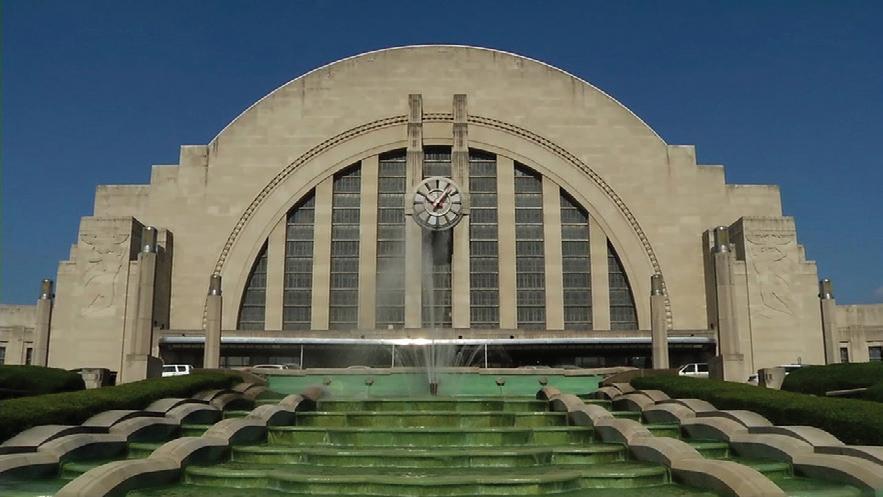
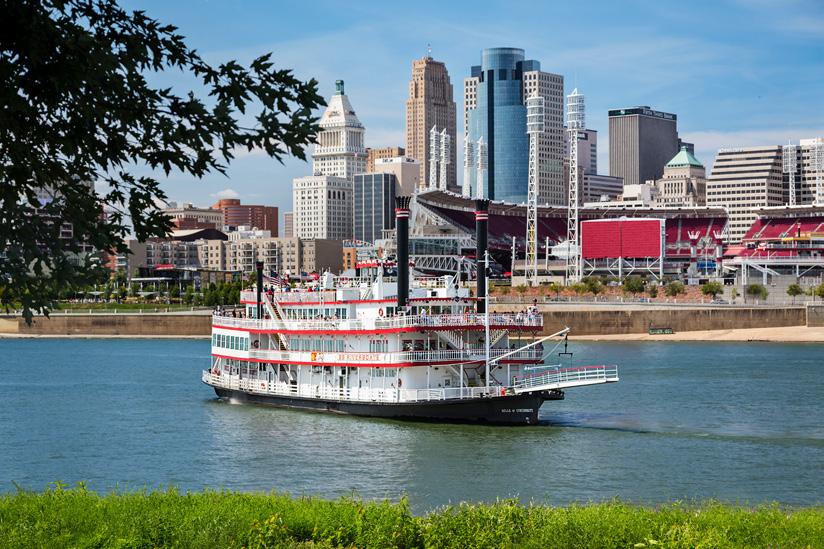


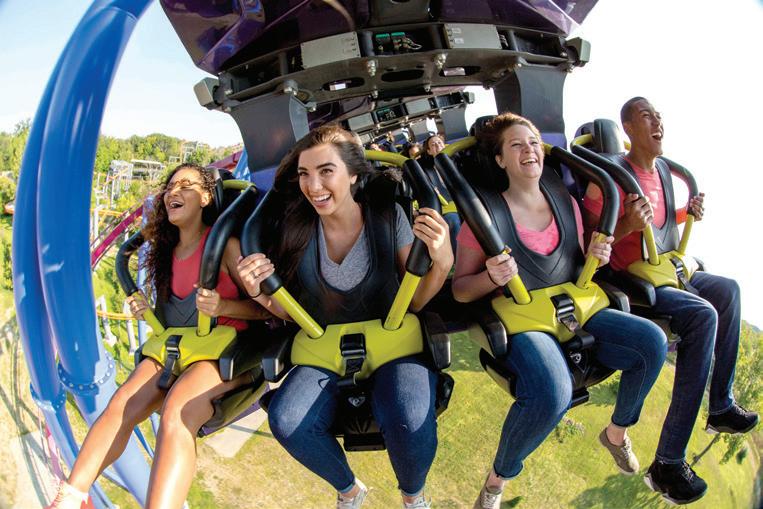



THIS CHARMING DINNER THEATRE HAS BEEN ENTERTAINING AND FEEDING GUESTS FOR MORE THAN 55 YEARS AS THE LARGEST OF ITS KIND IN THE NATION
The Chanhassen Dinner Theatres (CDT), located in the Twin Cities, Minnesota metropolitan area, is the largest professional dinner theatre in the nation. Since its opening in 1968, CDT has produced over 250 shows and entertained more than 13 million guests!
As a one-stop shop for dining and entertainment, CDT produces year-round professional musical theatre and offers a tribute concert series and improv comedy shows. Almost every night of the year, more than 300 people come together to bring live theatre to life at CDT. Choose from 8-10
entrée options and enjoy a uniquely American art form: musical theatre.
CDT is not just a theatre; it’s a producing theatre company where every production is meticulously conceived and designed by our artistic teams and made on-site in our creative shops. The Twin Cities area
of Minneapolis/St. Paul has the second-largest number of expert theatres per capita, just behind New York City, according to Backstage, the Performing Arts Weekly. This concentration of professional theatres attracts a large pool of gifted artists, giving Chanhassen access to world-class musical theatre talent.
From the skilled artistic directors, musicians,
actors, chefs and waitstaff – everyone is motivated to help you make lasting memories and celebrate your most special moments. No matter the occasion, you can count on the CDT team to be truly entertaining. Groups of 12 or more receive special rates and benefits. Contact a group sales specialist to discuss your group’s needs, requests and questions.

groupsales@chanhassendt.com
chanhassendt.com/group-tickets
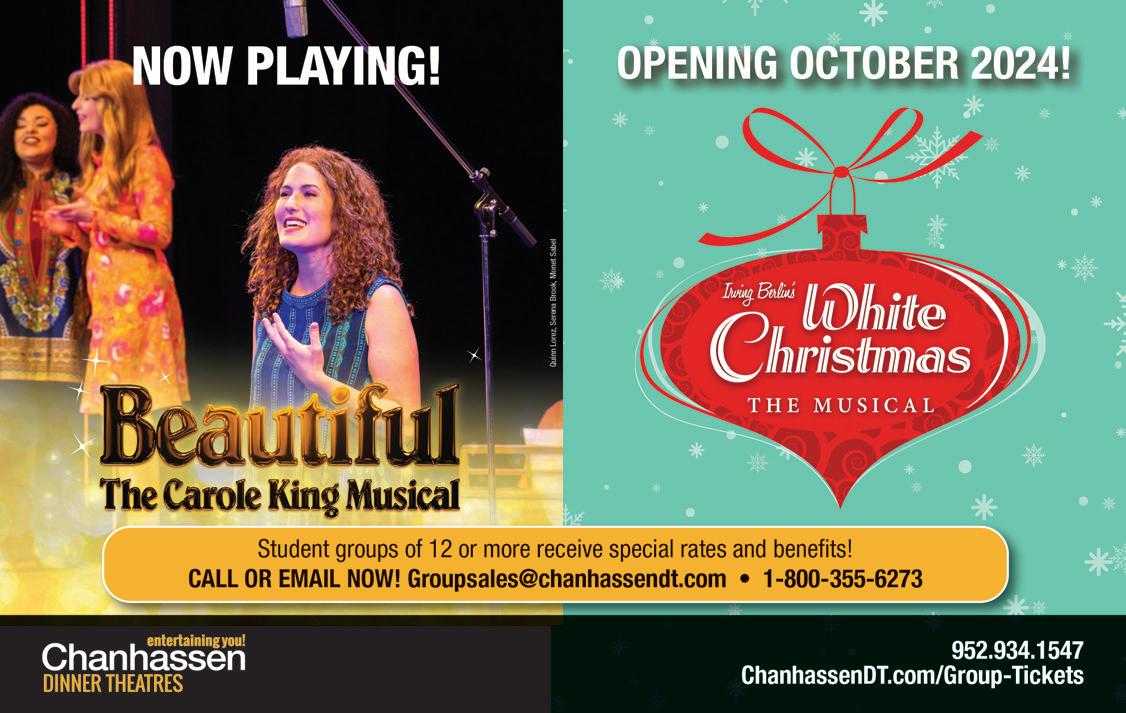
Gettysburg, PA stands uniquely positioned as one of our nation’s premier historic travel destinations.
The Eastern states of the U.S. are nothing if not diverse when it comes to the possibilities of stellar student group trips. Whether you’re looking to dive deep into the rich history of this country or are opting for culture-filled experiences, this fascinating region delivers beyond expectations.
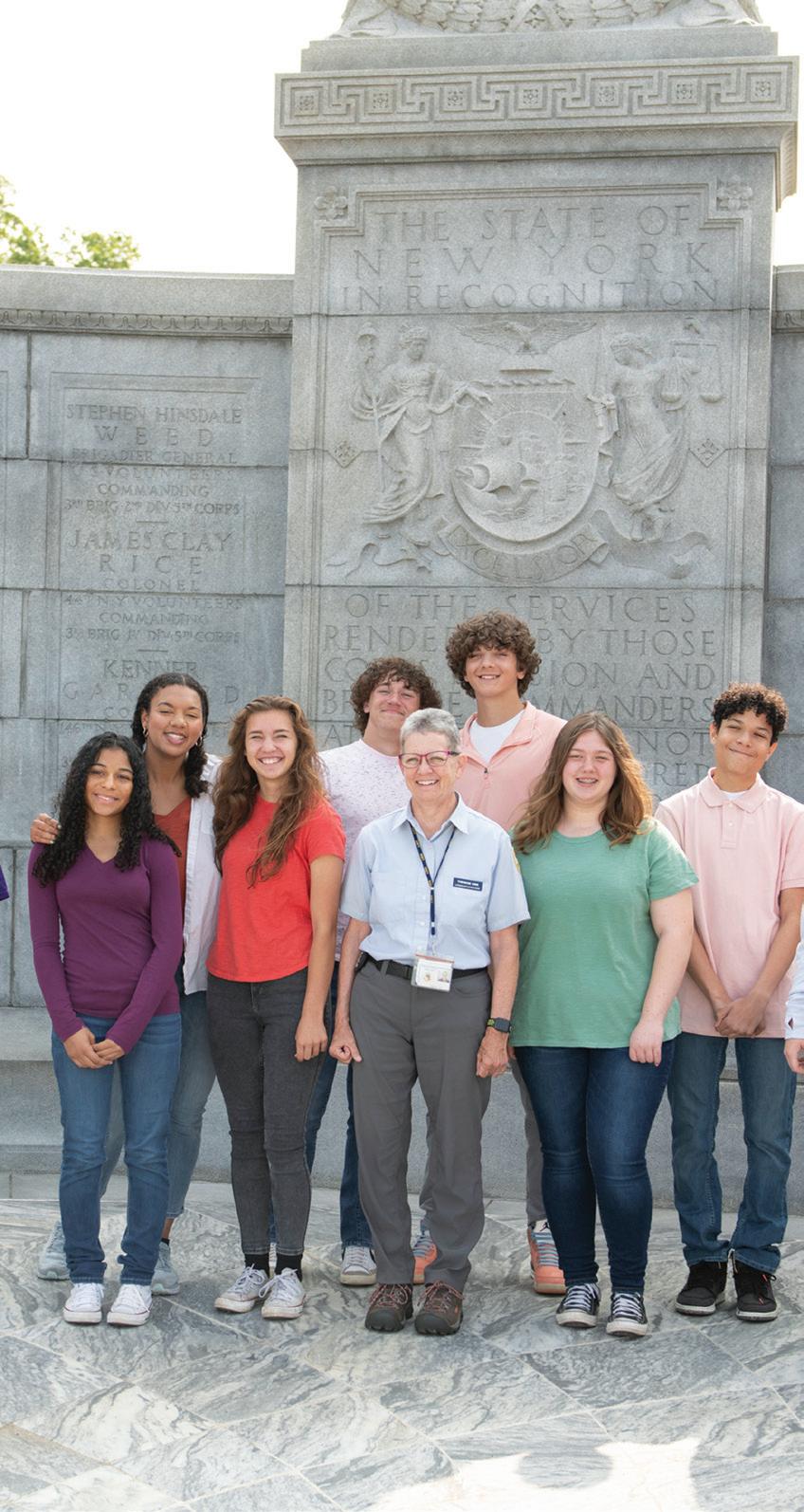
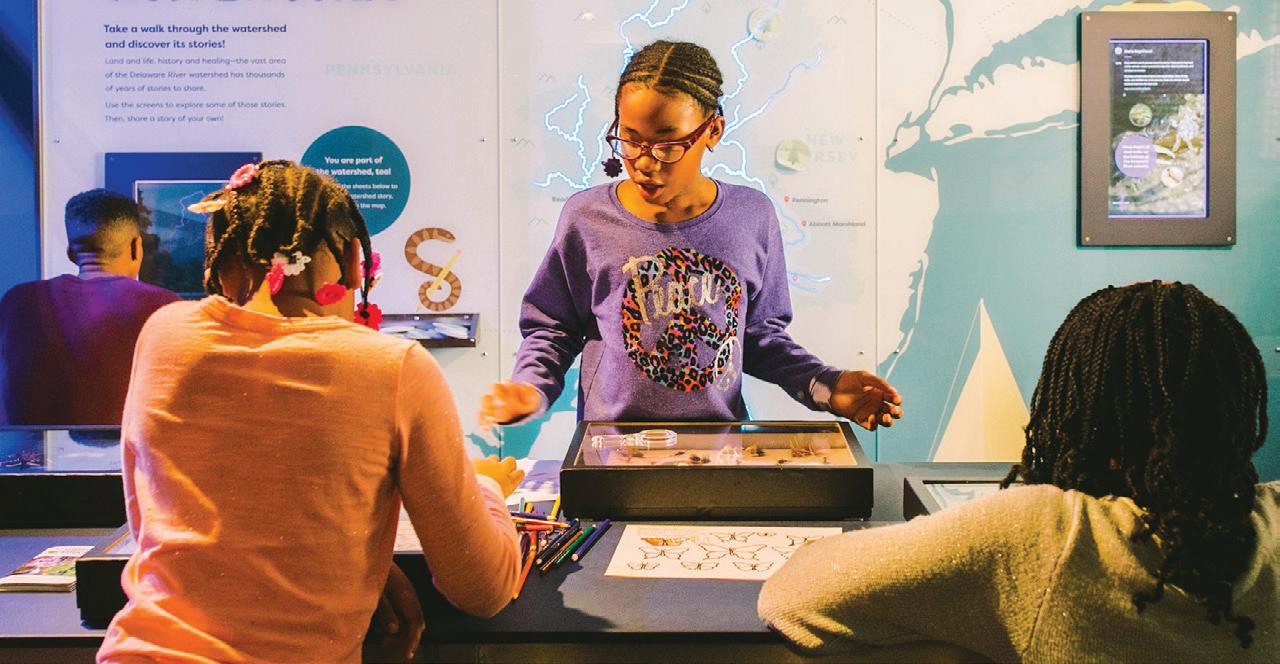
Located along the Delaware River in Philadelphia, the Independence Seaport Museum welcomes students of all ages year-round. At the museum, water is the unifying thread, connecting our historic ships and award-winning exhibitions so your group can discover the history, science and cultural communities around Philadelphia’s waterways. At the Water’s Edge, the museum’s latest exhibit uncovers the story of those who lived and worked along the Delaware River. More awardwinning exhibitions await your student group!
INDEPENDENCE SEAPORT MUSEUM
215-413-8663
groupsales@phillyseaport.org www.phillyseaport.org/group-visits


The Museum of the American Revolution creates virtual and inperson immersive, engaging experiences that explore the nuanced and inspiring story of the nation’s founding.
Students will learn how the early stages of rebellion took hold and discover how the Revolution survived its darkest hours through
stories from people on all sides, from loyalists and colonists to enslaved and free people of color.
Students will encounter immersive galleries that challenge them to consider what the Revolution was like from the perspectives of people who experienced it. They’ll stand beneath the branches of a life-size
recreation of Boston’s Liberty Tree, climb aboard a replica privateer ship to load a cannon, and listen to members of the Oneida Indian Nation discuss whether to side with the Continental Army. They’ll gain a deeper understanding of the diverse people and complex events that sparked the ongoing American experiment.
Enhance your visit with our hands-on classroom programs. Examine replica artifacts in Thinking Like a Historian , learn about life on a military campaign in Within These Walls , and witness history Through Their Eyes , the Museum’s flagship ingallery experience. Explore the opportunities and challenges faced by people of African descent in Whose

Liberty? These programs can take place in person or virtually and serve as an excellent complement to the Museum’s guided gallery experience.
MUSEUM OF THE
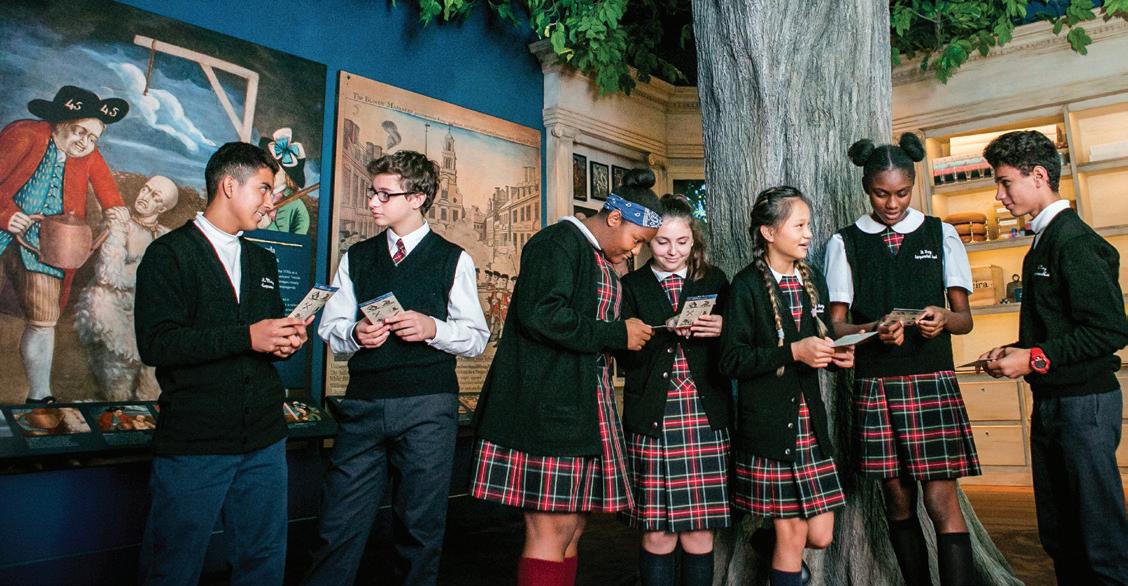
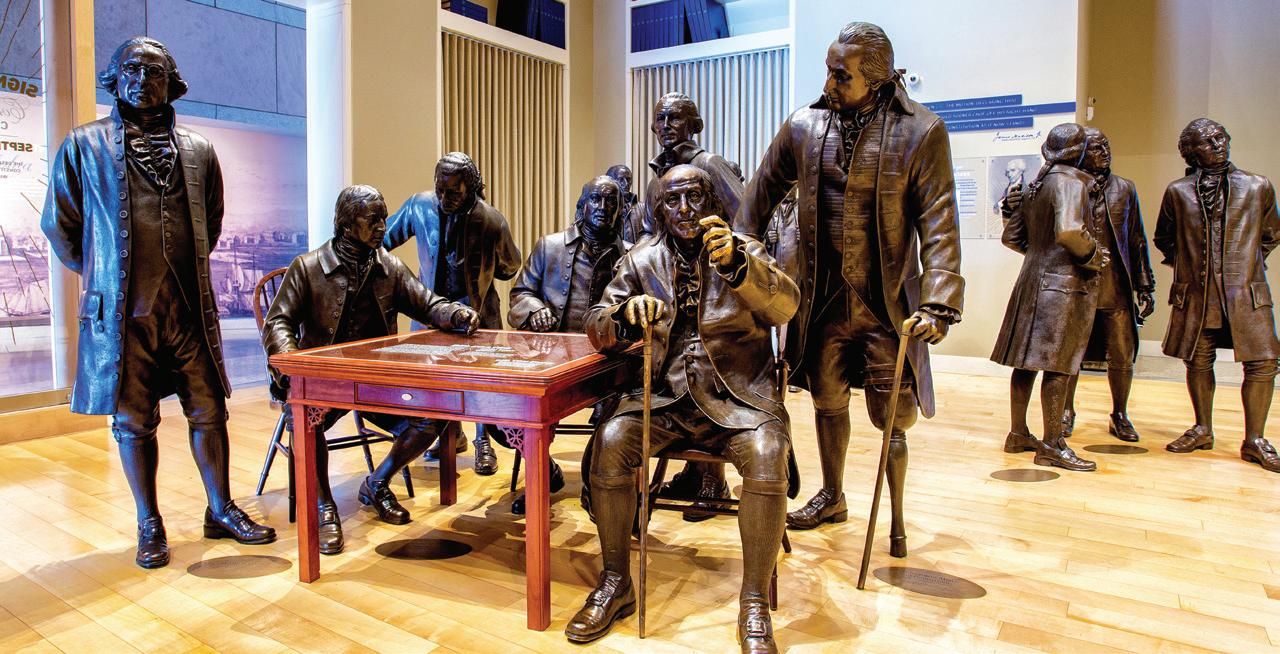
STUDENTS CAN DISCOVER THE VITAL ROLE THE U.S. CONSTITUTION
PLAYED IN OUR GOVERNMENT’S FORMATION THROUGH ENTHRALLING STORIES, HISTORIC DOCUMENTS AND COMPELLING EVIDENCE
The National Constitution Center in Philadelphia brings together people of all ages and perspectives, across America and around the world, to learn about, debate, and celebrate the greatest vision of human freedom in history, the U.S. Constitution. Visit the museum in person for an immersive field trip and discover rare artifacts
and interactive showcases inspired by the U.S. Constitution, or experience the museum online through live online tours, interactive programs, and classes.
The National Constitution Center is the first and only museum dedicated to the U.S. Constitution. Through interactive exhibits, rare artifacts, and live theater, the
Center brings the Constitution to life for visitors of all ages. In Signers’ Hall, walk among 42 life-size bronze statues of the signers of the Constitution. In the Story of We the People, explore over 100 multimedia elements and discover for yourself why the U.S. Constitution is as important today as it was over 200 years ago.
After your visit, bring the National Constitution Center home with you and into your classroom! Museum resources include an online Interactive Constitution and drawing on primary source documents from the new, curated online Founders’ Library—containing over 170 historical texts and over 70 landmark Supreme Court cases selected by leading experts of different perspectives—students can study the historical and
philosophical foundations of America’s founding principles from a range of diverse voices.
This must-see museum is located at 525 Arch Street just steps from the historic Liberty Bell and Independence Hall making this a magnificent field trip destination. Groups of 15 students or more receive discounted admission rates to premier exhibits, history tours, and educational programs.
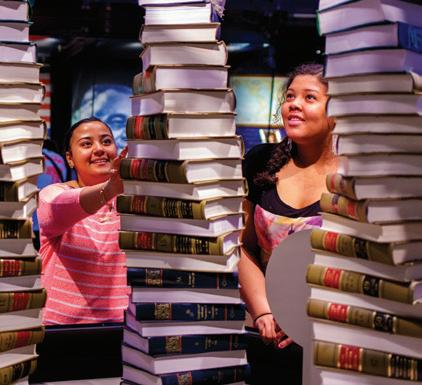
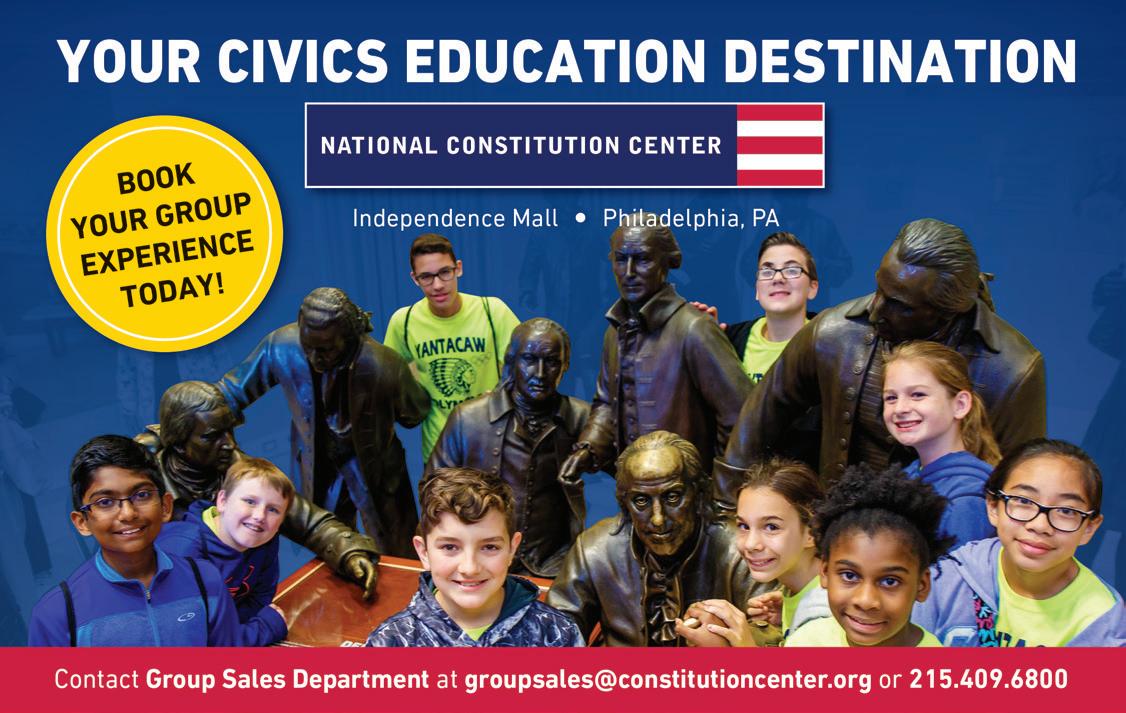

EXPERIENCE THE MAGIC OF THE HOLIDAYS IN NEW YORK CITY AT THE CHRISTMAS SPECTACULAR STARRING THE RADIO CITY ROCKETTES
It’s never too early to start planning your class trip to the Christmas Spectacular Starring the Radio City Rockettes® presented by QVC! With dazzling performances by
the legendary Rockettes®, spectacular sets, and stateof-the-art technology, there is a reason the Christmas Spectacular remains New York City’s favorite holiday tradition.
Make the experience even more unforgettable by taking a guided tour of the production’s iconic home, Radio City Music Hall®! Don’t let this magical moment pass by – secure
your tickets and give your students the gift of wonder and excitement. Reserve your group’s spot today and let the magic of the Christmas Spectacular spark endless smiles and unforgettable moments for your students. Special experience packages are available including Sounds of Christmas where your group has the opportunity to sing on the Great Stage and open
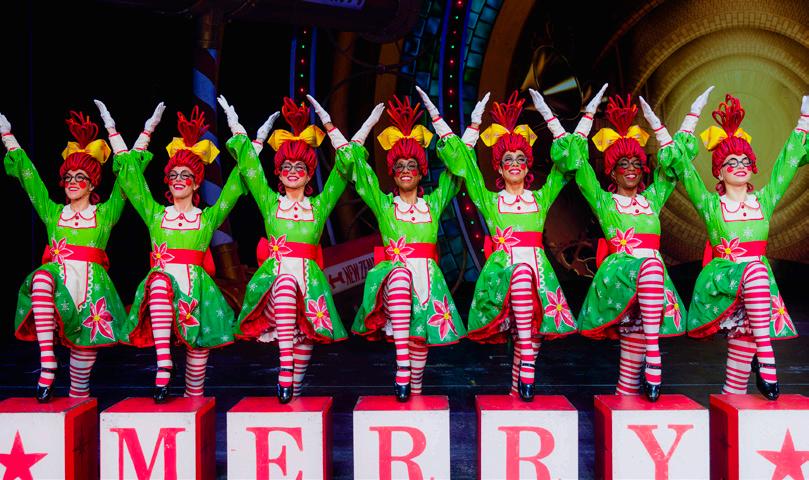
for the Rockettes with a five-minute holiday-themed a cappella performance. Groups of nine or more can reserve with group sales for great seats and prices!
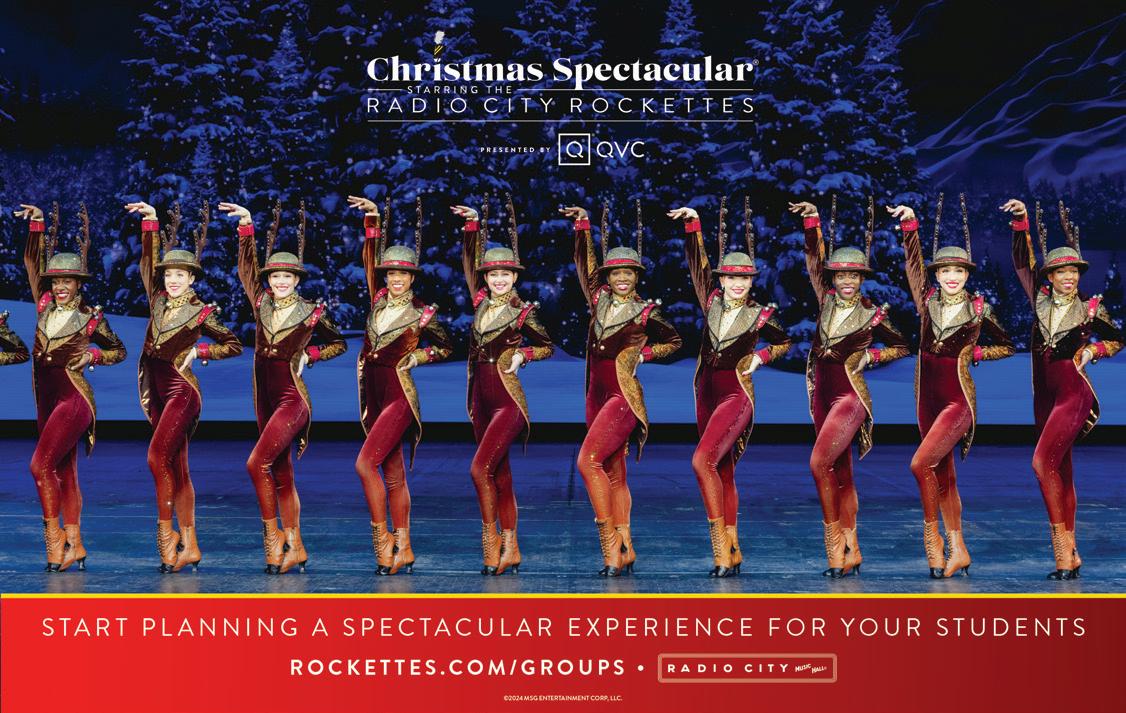
Student groups will step inside the magic with Disney on Broadway’s Hit Musicals! From the iconic Aladdin and The Lion King to immersive theatrical workshops, there is no shortage of magic for your group when they visit New York City. For generations, children have grown up enchanted by the special sort of magic only found in Disney movies. Starting in 1994, Disney has interpreted some of their wellloved classics to the Broadway Stage. Since its foundation, eight Disney Broadway titles have been seen by over 128 million theatergoers, been nominated for 52 Tony Awards, and have won Broadway’s highest honor 19 times.


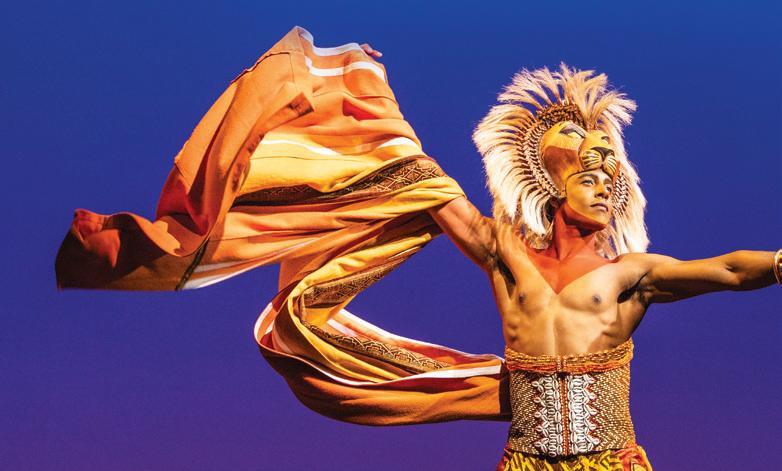
Since its foundation, eight Disney Broadway titles, including The Lion King, have been seen by over 128 million theatergoers. ©Disney


From the Pride Lands of Africa, to the streets of Agrabah, Disney on Broadway continues to transport audiences of all ages into their world of magic where dreams come true.
For over 25 years, The Lion King has been performing on Broadway, finding its home at Minskoff Theatre since it opened in 1997. The blending of Broadway-style
songs and staging with African rhythm, dance and voices has contributed to the musical’s 70 major theater awards and its international popularity.
On Broadway, this musical brings the characters to life and becomes a very human story through the use of evocative masks and costumes that merge the human figure with animal physicality with larger-than-life puppets that reveal the human performers underneath. If your group can’t make it to New York City, The Lion King is also
on a North American Tour, with dates and locations through 2024.
Aladdin has transformed the New Amsterdam Theatre in New York City into the streets of Agrabah eight nights a week. With over 84 separate special effects featured throughout the musical adaptation, there is no shortage of the magic and spectacle, which has made the movie a beloved classic.
In its Broadway production, Aladdin’s original inspiration from jazz legends of the early 1900s is more evident than ever in the live renditions of “Prince Ali”, “One Jump Ahead” and “Friend like Me.” The costuming is also an unsung hero of the on-stage production. Over 300 people from 26 different countries worked together on these costumes, the most ornate having 8,000 individual Swarovski crystals.
Disney Theatrical Group has also developed an Aladdin study guide to further engage student groups with the
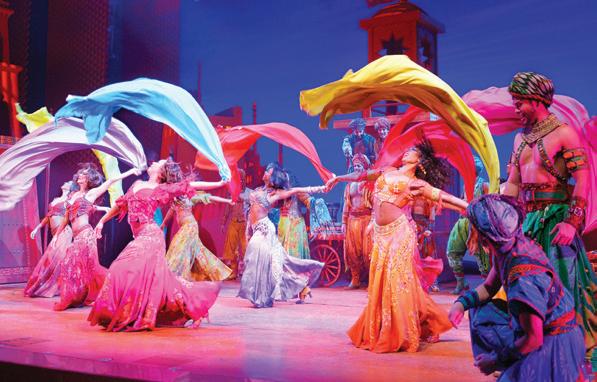

themes of the musical. This guide has material for before and after the show in order to provide students with additional historical context and integrate the themes into exercises in Language Arts, Social Studies, and Arts education.
Student groups can dive into the movement and music of Disney’s Broadway shows when they add on a workshop. Developed by Disney’s Education and Audience Engagement team, the workshops are taught by toptier Teaching Artists that will take your group though a musical theatre journey.
No matter the skill level, Disney’s Teaching Artists will find the inner performer in each guest and create a welcoming environment for everyone to express themselves, and feel what it’s like to be a Broadway performer.







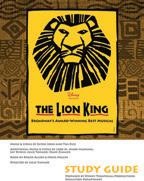




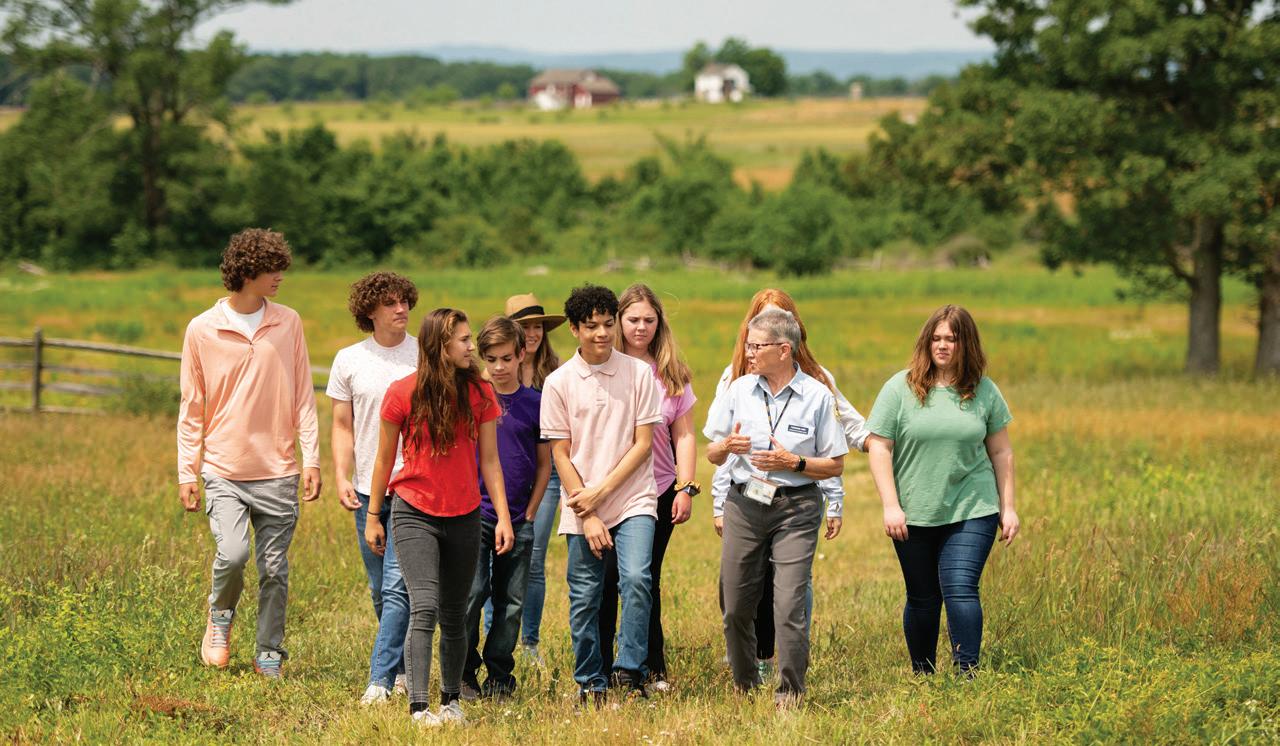
TOUR GETTYSBURG TO UNCOVER REMARKABLE CIVIL WAR HISTORY
SURROUNDED BY IDYLLIC SCENERY AND PLENTY OF EXCITING OUTDOOR ACTIVITIES FOR STUDENT GROUPS
Gettysburg, PA stands uniquely positioned as one of our nation’s premier historic travel destinations to bring your students. Nestled in beautiful Adams County, it offers breathtakingly scenic landscapes, wide-ranging outdoor activities, adventurous dining and – perhaps most
famously – an unparalleled, firsthand look at our country’s dramatic and inspiring past. Gettysburg’s many contemporary museums and intimate house tours offer a fascinating insight into every aspect of the Civil War. You’ll get to know the details of the conflict from an up-close perspective. Then, explore the
story beyond the battlefield, discovering the local aftermath of the war, and enabling you to stand in the footsteps of everyday civilians whose lives were turned upside down by three fierce days of fighting in the place they called home. For those interested in other historic subjects, there are also exceptional museums
specifically dedicated to both the Second World War and President Dwight D. Eisenhower, whose Gettysburg farm is a National Historic Site.
Take a guided downtown walking tour through the historically preserved area encircling Lincoln Square. Discover our nation’s gripping legacy at interactive attractions, state-of-the-art education centers, and virtual reality experiences.
Adams County is also home to the South Mountain
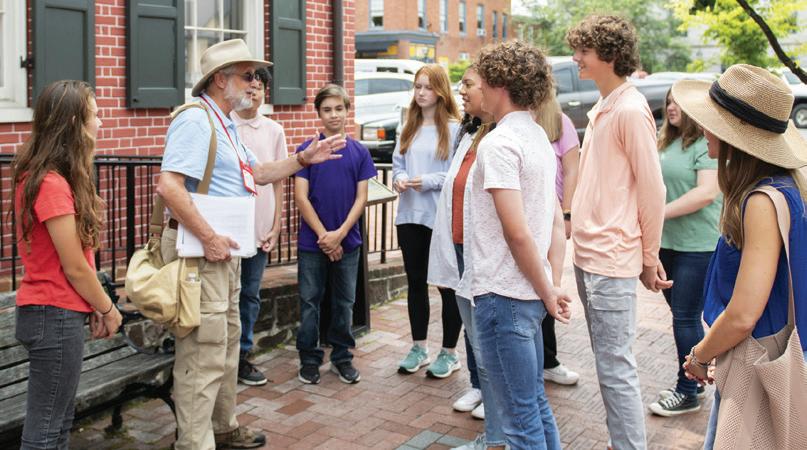
Fruit Belt, offering incredible agriculture throughout the year. Take a covered wagon ride around Hollabaugh Bros., Inc. Fruit Farm & Market or see a hive of honey bees hard at work in the bee room.
Lindsay Methlie, Director of Sales 717-338-3062
lindsay@destinationgettysburg.com www.destinationgettysburg.com


Gettysburg, a town whose very name speaks to the American story. Allow your students to experience one of the most dramatic turning points in our country’s history — and gain a firsthand insight into this pivotal chapter of our nation’s journey.
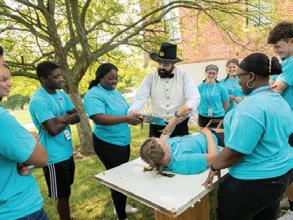
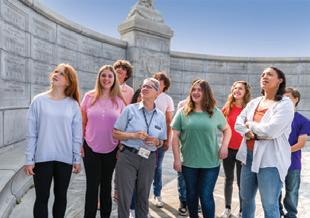

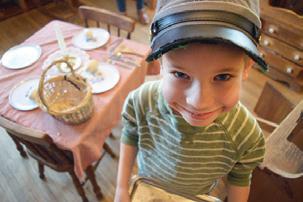

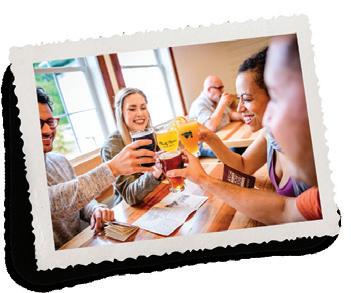
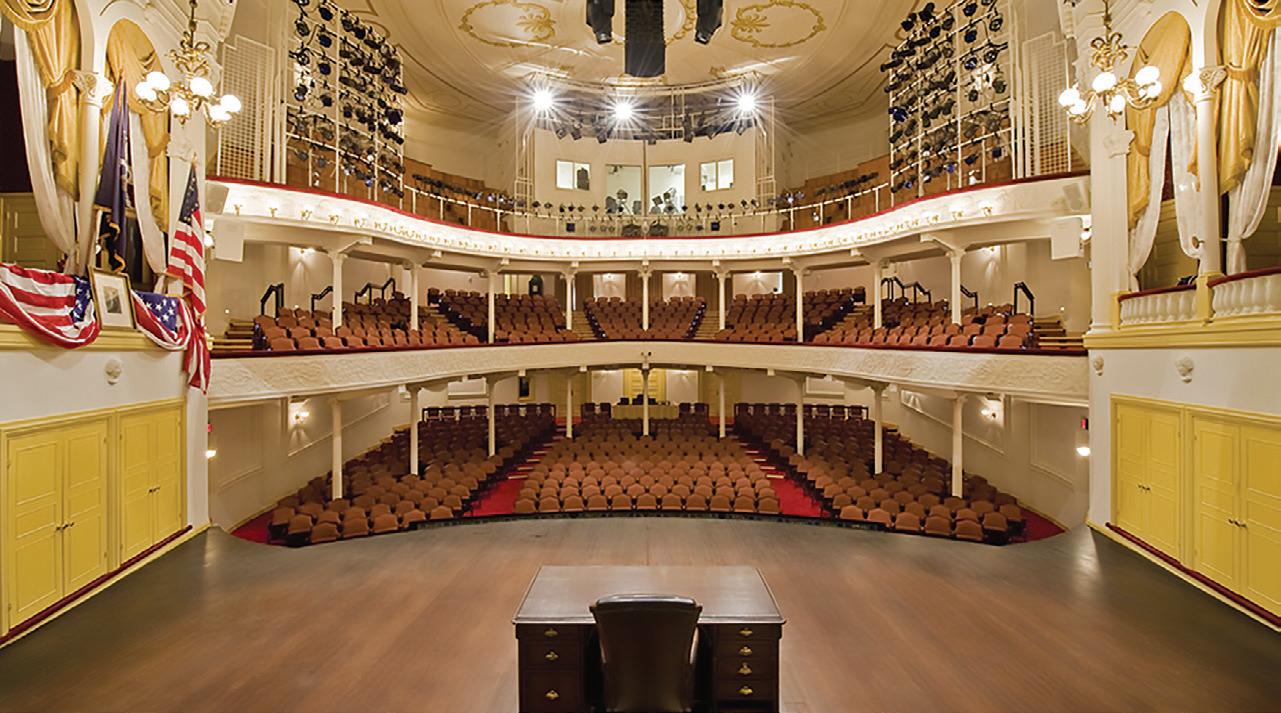
Ford’s Theatre has been an unforgettable piece of America’s history since April 14, 1865, when actor John Wilkes Booth fatally shot President Abraham Lincoln as he watched a performance of Our American Cousin from the theater’s presidential box. Fast forward 158 years and
the theater is still a thriving, working theater, historical monument, world-class museum and education center. Featuring historical programming year-round, Ford’s Theatre is the premier destination to explore Lincoln’s legacy.
Visit Ford’s Theatre and step back in time. Open
daily, the self-guided tour of the historic site explores the events surrounding that fateful night and the lasting impact of Lincoln’s assassination.
Experience history like never before on the interactive walking tour Investigation: Detective McDevitt. This engaging, 1.5mile History on Foot walking
tour of downtown D.C. revisits sites and reexamines clues from the Lincoln Assassination Conspiracy, allowing you to be a part of the investigation.
Through four areas, glimpse assassination artifacts, step inside the famed theatre, visit the house where Lincoln subsequently died and experience exhibits of the aftermath.
Groups of 20-55 can

Ford’s Theatre’s museum
reserve their spot through the online calendar with an option for a pre-recorded audio tour with additional content and historical background for your group.
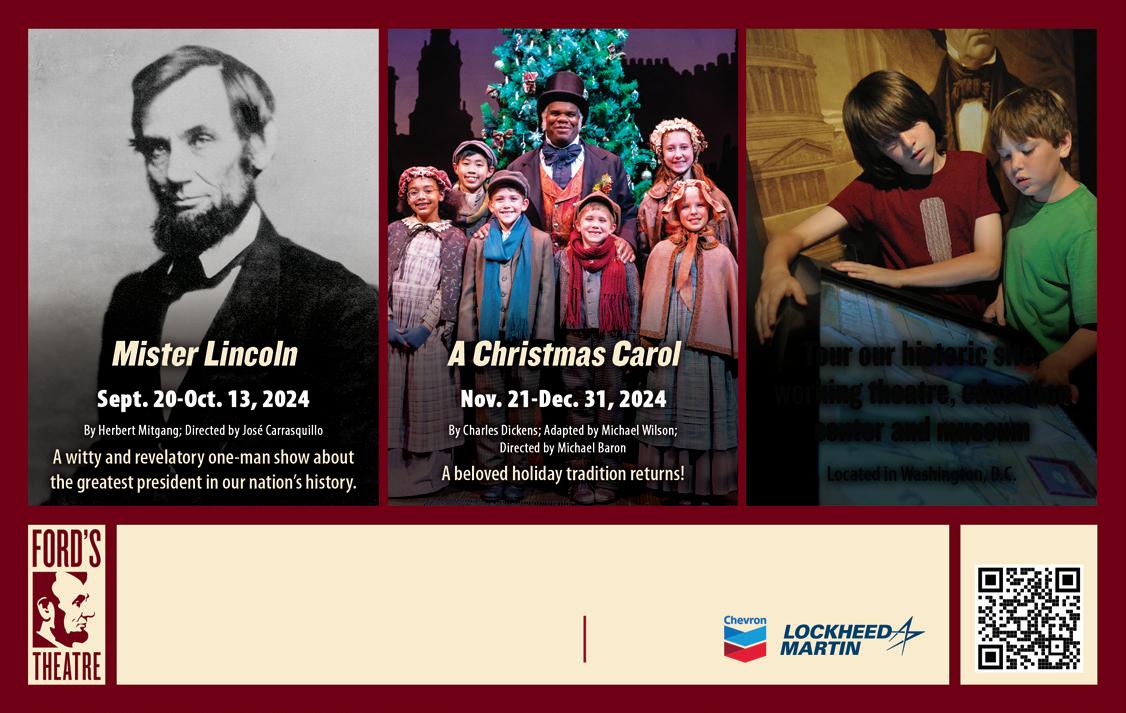

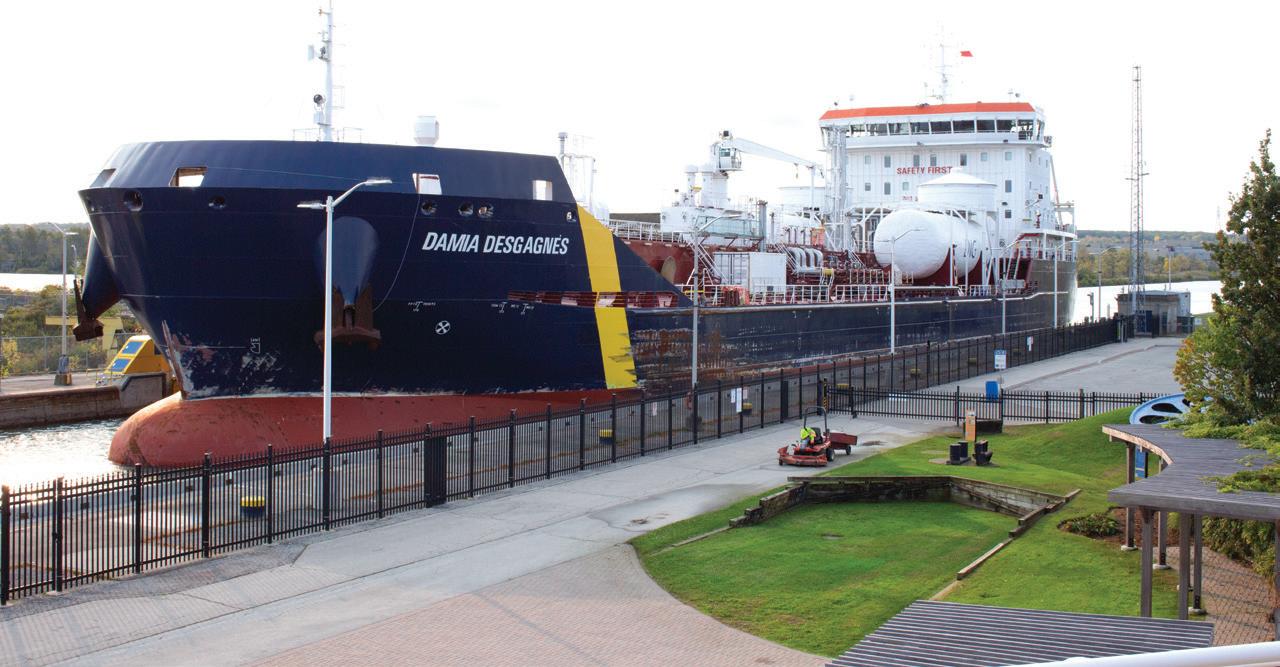
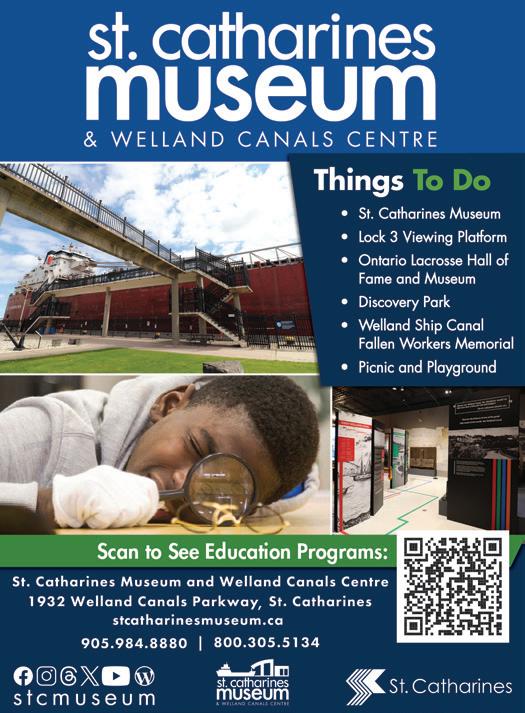
MARITIME HISTORY COMES ALIVE AT THE WELLAND SHIP CANAL FOR STUDENT GROUPS OF ALL GRADES
You won’t get closer to a Great Lakes Ship unless you’re a sailor yourself! Marvel as ships work their way through the amazing Welland Ship Canal and connect with the history that grew up around the canal. We offer learning opportunities for all ages and group sizes. Our friendly and engaging tour guides can accommodate and incorporate your learning objectives into our fun, interactive, and fast-paced style of programming.
museum@stcatharines.ca www.stcatharinesmuseum.ca

Natural landscapes and American history make Virginia Beach ideal for experiential learning.
Perhaps of all the regions in the U.S., the South offers some of the most unique cultural and historical heritage features. From its early European colonial settlements to the legacy of the Confederacy during the Civil War, the South developed its own customs, literature, musical styles and cuisines—all of which make it a special place for a student group trip.
96 Ron Jon Surf Shop Photo courtesy of Virginia Beach Convention & Visitors Bureau
84 Virginia Beach CVB
86 George Mason’s Gunston Hall
88 Jamestown-Yorktown Foundation
90 Pigeon Forge
92 Coastal Mississippi
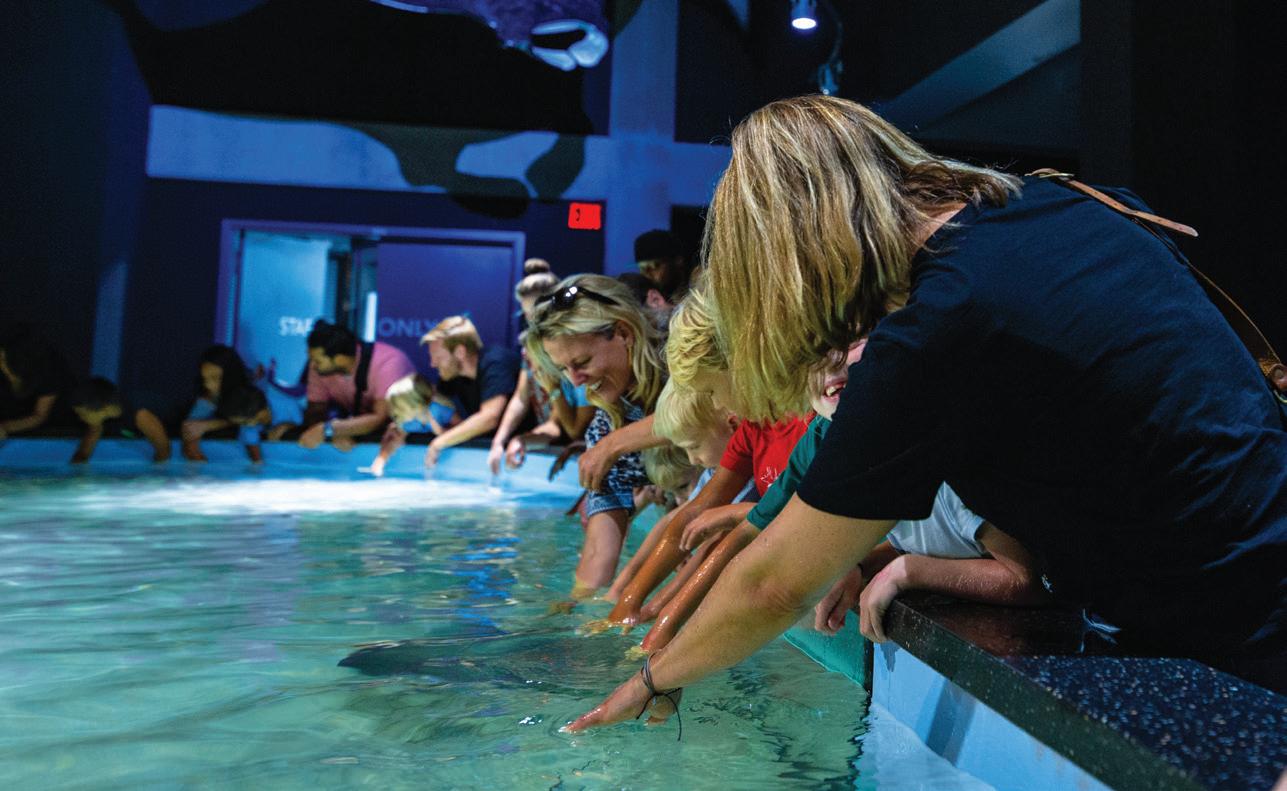
NATURAL LANDSCAPES AND AMERICAN HISTORY MAKE VIRGINIA BEACH IDEAL FOR EXPERIENTIAL LEARNING

Not just a clever name, First Landing State Park is where the English Colonists first landed in 1607 and is Virginia’s most visited State Park.
Comprising 2,888 acres of maritime forests, rare plants, native wildlife and lagoons, it offers 20 miles of hiking and biking trails through scenic cypress swamps and a mile
of beach along Chesapeake Bay for aquatic activities.
False Cape State Park extends to the North Carolina border, sitting between Back Bay and the Atlantic. With 3,844 acres and 5.9 miles of beachfront, it offers guided kayak trips and hiking and biking trails. Visitors can view the park via the Blue Goose Tram, a four-hour guided tour
through Back Bay National Wildlife Refuge and False Cape State Park.
Experience adventures at
sea on seasonal whale or dolphin-watching cruises from Virginia Beach. During the winter months, hop
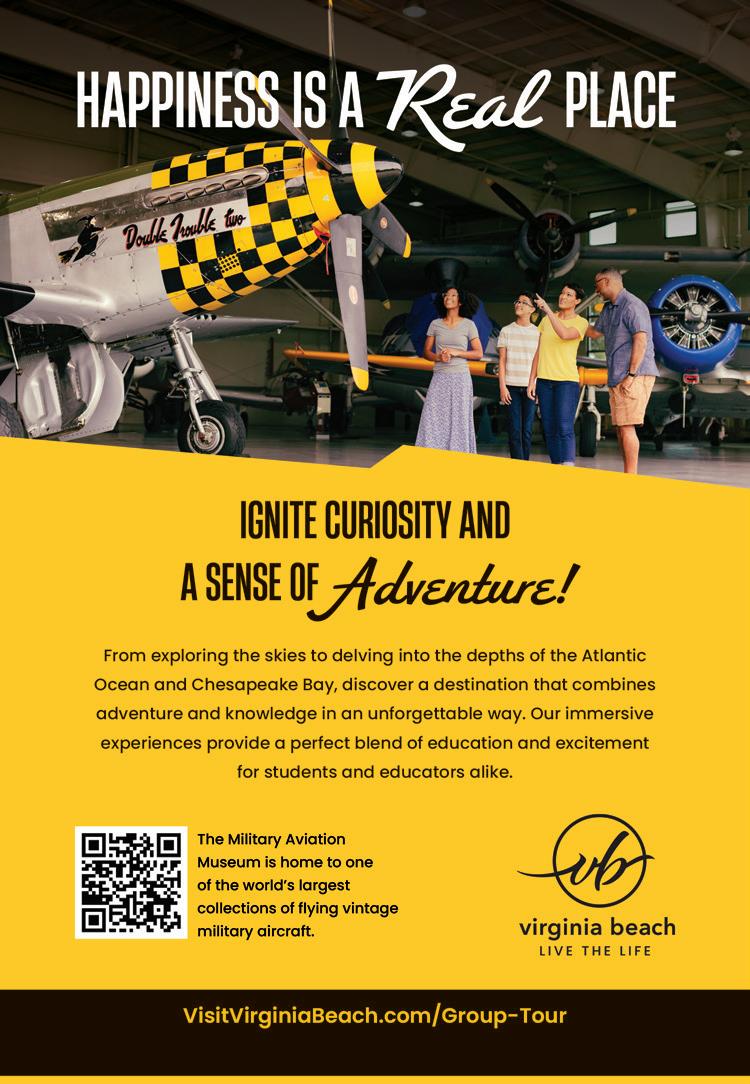
aboard a Rudee Tour to glimpse dolphins, seals, and whales. Their boats are all equipped with bathrooms, a snack bar, a full bar, a heated indoor cabin with comfortable seating, and a spacious upper deck for unobstructed viewing.
Dolphin Kayak Nature Tours offers guided flat-water excursions along Rudee Inlet in single or tandem vessels. Glimpse dolphins, American Bald Eagles, deer, fish and other native wildlife and exotic sea life.
The Virginia Aquarium & Marine Science Center provides visitors with a glimpse into a magical underwater world.
Experience wildlife boat tours to see dolphins and whales, get up close with animals as knowledgable staff answer questions and go behind the scenes. Special addmissions rates are available for groups of 15 or more.
VIRGINIA BEACH CONVENTION & VISITORS BUREAU
757-385-4700
www.visitvirginiabeach.com/ group-tour

A PERFECT FIELD TRIP DESTINATION FOR SCHOOLS AND YOUTH GROUPS, GEORGE MASON’S GUNSTON HALL STANDS AS AN INTRIGUING EDUCATIONAL GEM
Build your student’s historical thinking skills and knowledge through a field trip to Gunston Hall. With meticulously curated programs and ageappropriate interactive exhibits, Gunston Hall provides an immersive journey into the life and ideas of George Mason, a key architect of American
Democracy and friend, colleague and confidante to four US Presidents.
Unique programs engage young minds through suitable activities, fostering an appreciation for the complexities of governance and individual liberties. All are available for both in-person and virtual field trips for schools and youth groups.
Step into the 18th Century with your group of fourth through sixth graders . Through exploration and activities, ascertain how revolutionary and colonial Virginia operated during the 1700s.
George Mason and the 1776 Virginia Declaration of Rights program welcomes middle school students to
explore the historic mansion, garden and museum. Students will learn about the development of American rights and government. They will discover the role George Mason played in creating the first bill of rights in American history, and his role in developing the US Constitution and US Bill of Rights. Groups will also examine how all people at Gunston Hall in the 18thcentury lived and did or did
not have access to the rights Mason created. George Mason & the Battle over Rights program actively engages high school students as they examine Mason’s passion for preserving individual rights. They will dive deeper into his complex life and perspectives on human rights and the 18th-century limits of those protected by them and discover the influences upon Mason’s perspectives on rights.
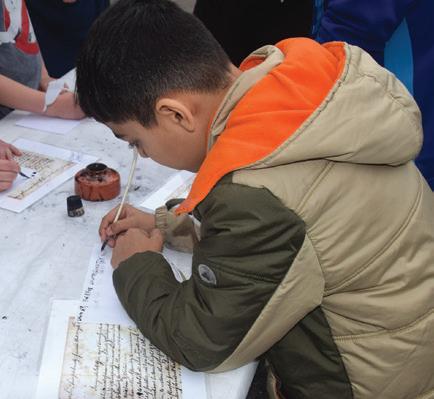
Dylan McCartney
703-550-9220
dylan.mccartney@gunstonhall.org gunstonhall.org

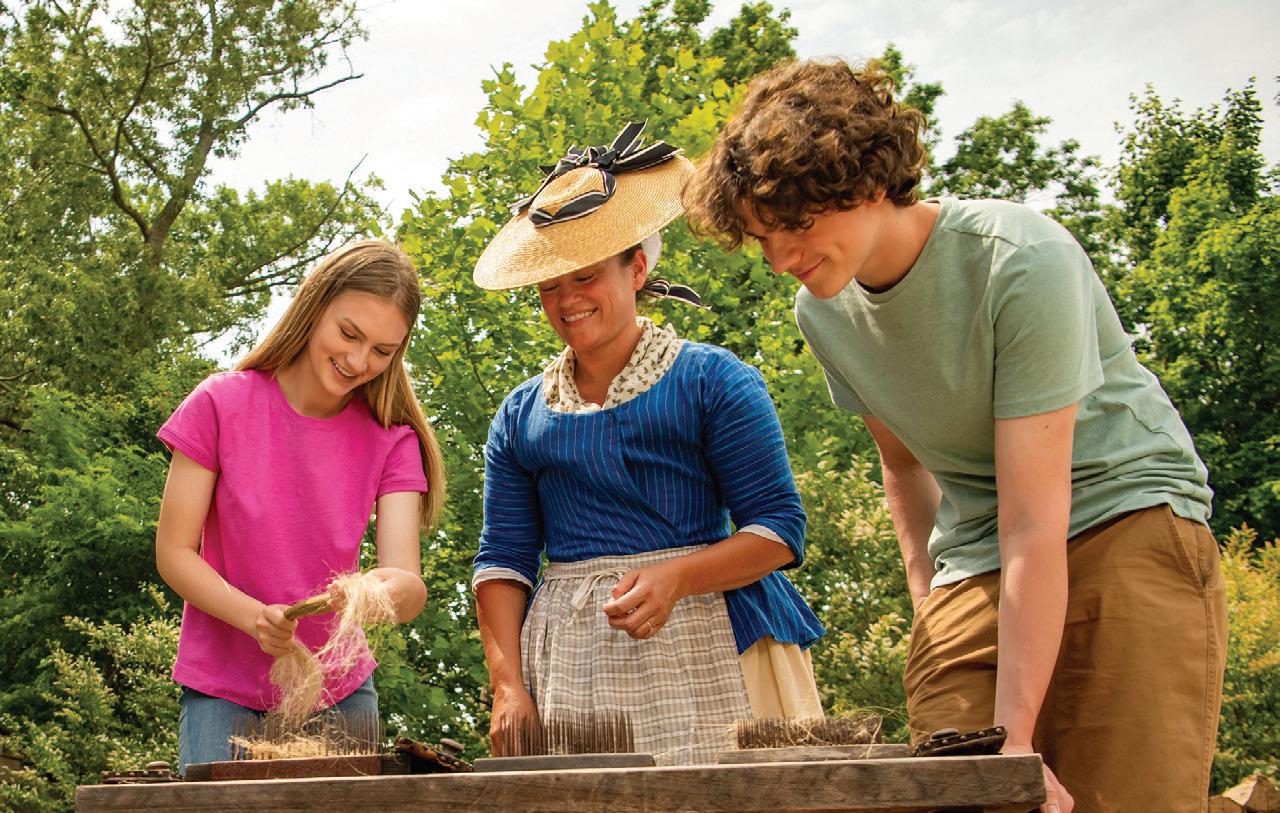
Jamestown Settlement and the American Revolution Museum at Yorktown offer immersive learning experiences for students to time travel to America’s beginnings in 17th and 18th-century Virginia. Throughout the year, teachers and students can discover the shared stories of people and events that
shaped early America in person at both museums through dynamic gallery exhibits and interactive living history in re-created settings. Historical interpretation and handson education programs connect the dots to help students understand their relevance today.
At Jamestown Settlement,
students can explore gallery exhibits and lifesize re-created settings to learn about the culture of the Virginia Indians who occupied the landscape for centuries, the arrival of English colonists in Jamestown in 1607 to establish America’s first permanent English colony and the first documented
arrival of West Central Africans in 1619, leading to cultural encounters and events that planted the seeds of a new nation.
At the American Revolution Museum, they can embrace the tumult and victory of the Revolutionary period to the dawn of the Constitution and beyond in engaging gallery exhibits and outdoor re-creations of a Continental
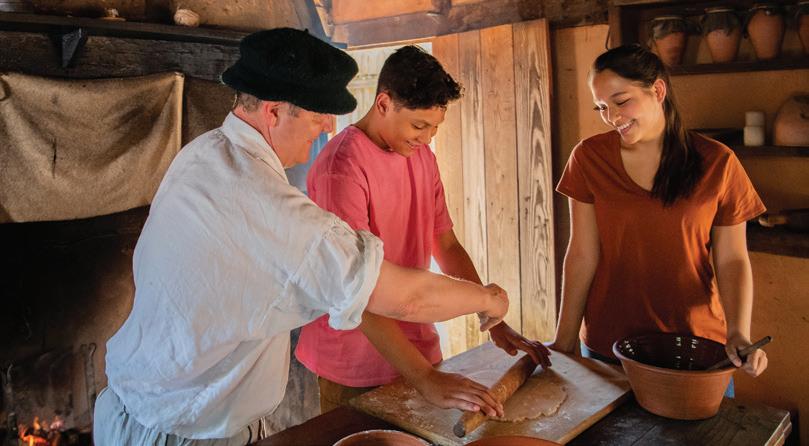
Army encampment and Revolution-era farm. Guided field trip tours include Government & Leadership, Living-History Sample, Gallery Sample and General.
JYF Group Reservations 757-253-4838
www.jyfmuseums.org/visit/ group-visits-field-trips


PIGEON FORGE, PERCHED IN TENNESSEE’S GREAT SMOKY MOUNTAINS, IS A KALEIDOSCOPE OF STUDENT EXPLORATIONS AND LEARNING OPPORTUNITIES FOR ALL AGE GROUPS
Located in the foothills of the Great Smoky Mountains, Pigeon Forge is the perfect backdrop for any field trip, and the Smokies provide amazing views for every season. Many attractions offer curriculums, including topics such as physics, zoology, geography and history, that can be incorporated into a
classroom setting prior to or after your visit. Of course, you can always explore one of America’s largest classrooms – Great Smoky Mountains National Park. Dollywood Theme Park features more than 50 rides and attractions, world-class entertainment, and many fabulous festivals. The Island in Pigeon Forge is a walkable
destination that offers over 70 shops, restaurants, rides and experiences. Pigeon Forge also features a variety of other attractions and activities, including Pink Jeep Tours, water parks, mountain coasters, miniature golf, indoor snow tubing and more. A wide variety of theaters and shows offer performance opportunities
for bands, show choirs, dance and choral groups, as well as backstage and educational tours. For a unique and up-close look at history, head to Alcatraz East Crime Museum and Titanic Museum Attraction or get a hands-on educational experience at WonderWorks. Pigeon Forge also offers professional planning assistance to ensure the

positive outcome that you desire. To help answer any questions you may have, contact their sales team at 1-800-285-7557 or visit PigeonForgeTours.com.
Info@MyPigeonForge.com PigeonForgeTours.com
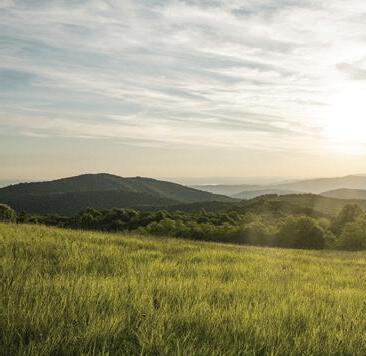
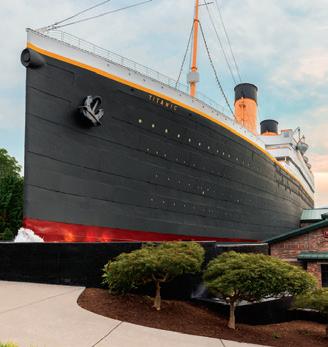
Student groups traveling to Coastal Mississippi will unearth a multitude of unique experiences throughout the diverse region. Outdoor explorations include a real-life shrimping expedition and a visit to Mississippi’s backyard for water play and maritime sights. INFINITY Science Center lets students interact with exhibits in space exploration, earth science and technology, while Mississippi Aquarium shows them an exciting underwater world from the brown to the blue and beyond.

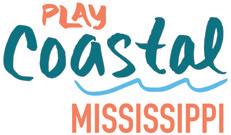
PLAY COASTAL MISSISSIPPI
Jessica Martin (228) 896-6699 jessica@coastalmississippi.com www.coastalmississippi.com

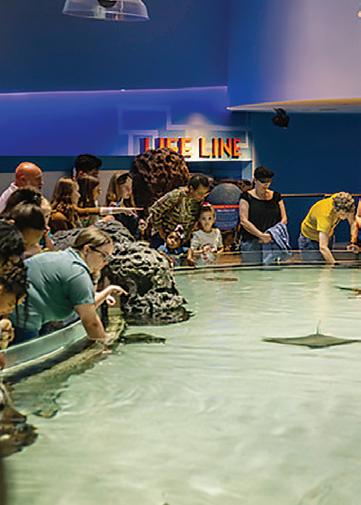


Day 1:
Begin in Pearlington at the INFINITY Science Center. Here, students will explore interactive exhibits and hands-on activities, delving into space exploration, earth sciences and technology.
LUNCH along Highway 90 as you head towards Gulfport.
Next, visit Mississippi Aquarium, where students can explore a 5.8acre indoor/outdoor campus featuring fresh and saltwater habitats and over
200 species of aquatic animals on an instructor-led tour. Visit Pelican Pointe Café for snacks and the Gulf Shop for unique souvenirs.
Shuttle across the newly constructed CTA Tram Bridge to Jones Park and experience a replica lighthouse, municipal harbor, splash pads, pavilions, and a curving promenade walk—all with stunning views.
DINNER at Shaggy’s Gulfport Beach for fresh fare in a fun, island atmosphere.
After breakfast, travel to Ocean Springs and the Walter Anderson Museum of Art to embark on a guided tour that illuminates and celebrates the legacy of artist-philosopher Walter Inglis Anderson (1903-1965).
LUNCH in Ocean Springs or across the bridge in Biloxi.
Visit the Maritime & Seafood Industry Museum, where students will discover over 300 years of history, heritage, and culture through unique artifacts and vintage photos. Exhibits highlight shrimping, oystering, boat building and hurricane impacts. At the Biloxi Small Craft Harbor, board the Sailfish for a real-life shrimping expedition with Biloxi Shrimping Trip.
DINNER at Big Play Entertainment Center provides evening meals along with bowling, go-karts, carnival rides, bumper cars, mini golf and more.



After breakfast, travel to Ocean Springs and check out of your hotel, then head to the Pascagoula River Audubon Center in Moss Point for immersive experiences in the distinctive local ecosystem. Afterward, visit the Gulf Coast Gator Ranch & Tours to walk along some of the most beautiful swamplands and experience alligators up close.
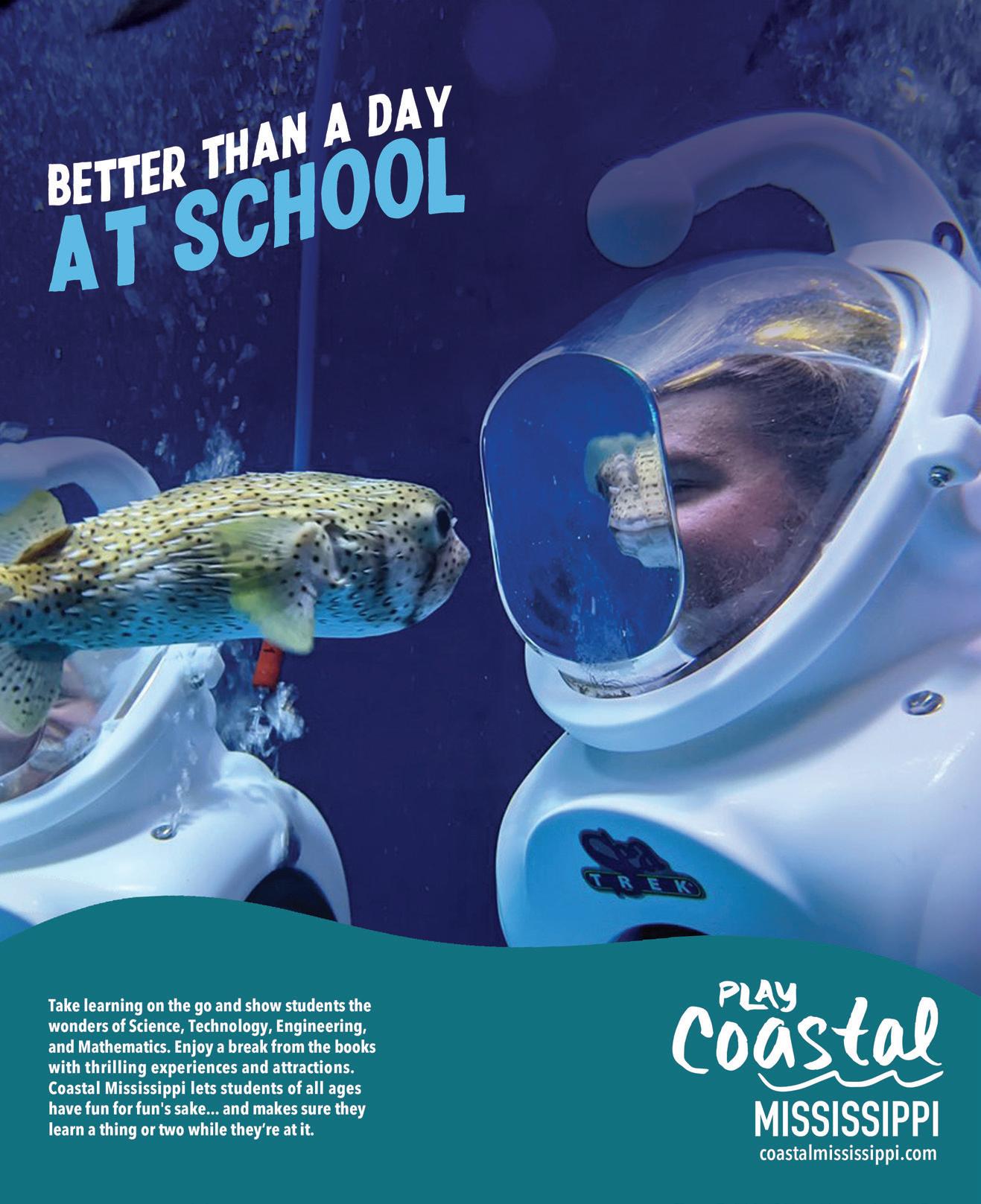

THE ORIGINAL BRAND CATERING TO THE SURF COMMUNITY AND BEACHGOERS, RON JON SURF SHOP CONTINUES ITS LEGACY BEYOND THE JERSEY SHORE
Ron Jon Surf Shop was founded in 1959 on the New Jersey shore. After gaining popularity with surfers and beachgoers over the years, the company expanded – opening stores in vacation destinations along the East Coast from Long Beach Island to Cocoa Beach to Key West.
Over 60 years later, Ron Jon is an iconic brand that welcomes all of those with a passion for summer fun. Your student group can make one-of-a-kind memories when they visit the flagship store in Cocoa Beach. This 52,000-squarefoot store is the World’s Largest Surf Shop, and it’s filled with the best selection of surf, skate and beach essentials on earth!
If your band, orchestra, chorus or dance ensemble is coming to the Orlando area, check out the Performance In Excellence program and perform at the Cocoa Beach store. This unique program allows elementary, middle
and high school entertainers a place to show off their talent, and it’s great any time of year. They have designated bus parking and an area outside the main entrance in which to perform. After the event, your group is presented with a commemorative plaque, and each participant receives a Ron Jon fun pack
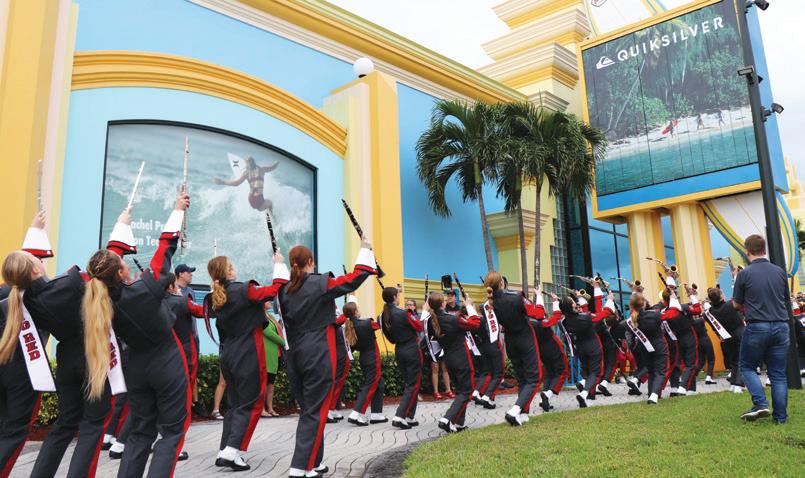
and a 15% discount card. Directors receive a gift and a 20% discount card. Ron Jon happily welcomes groups daily with discounts for preregistered groups!
www.ronjonsurfshop.com
